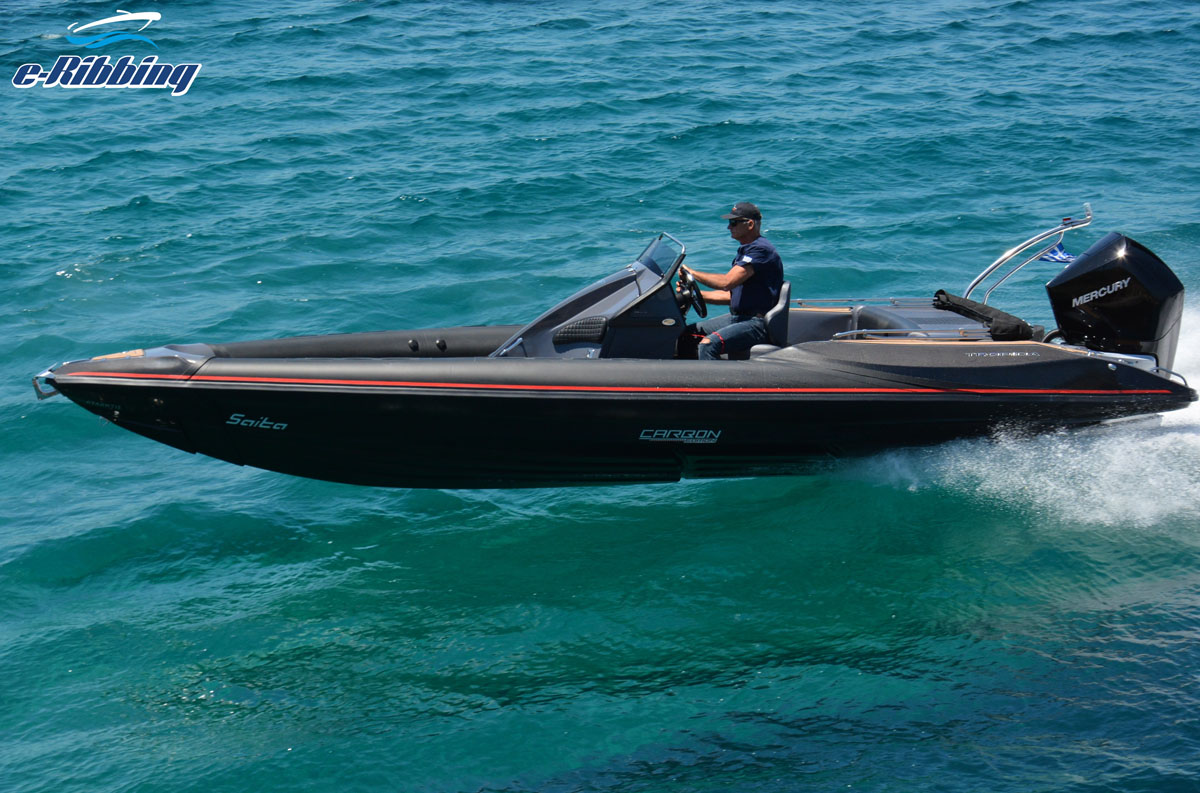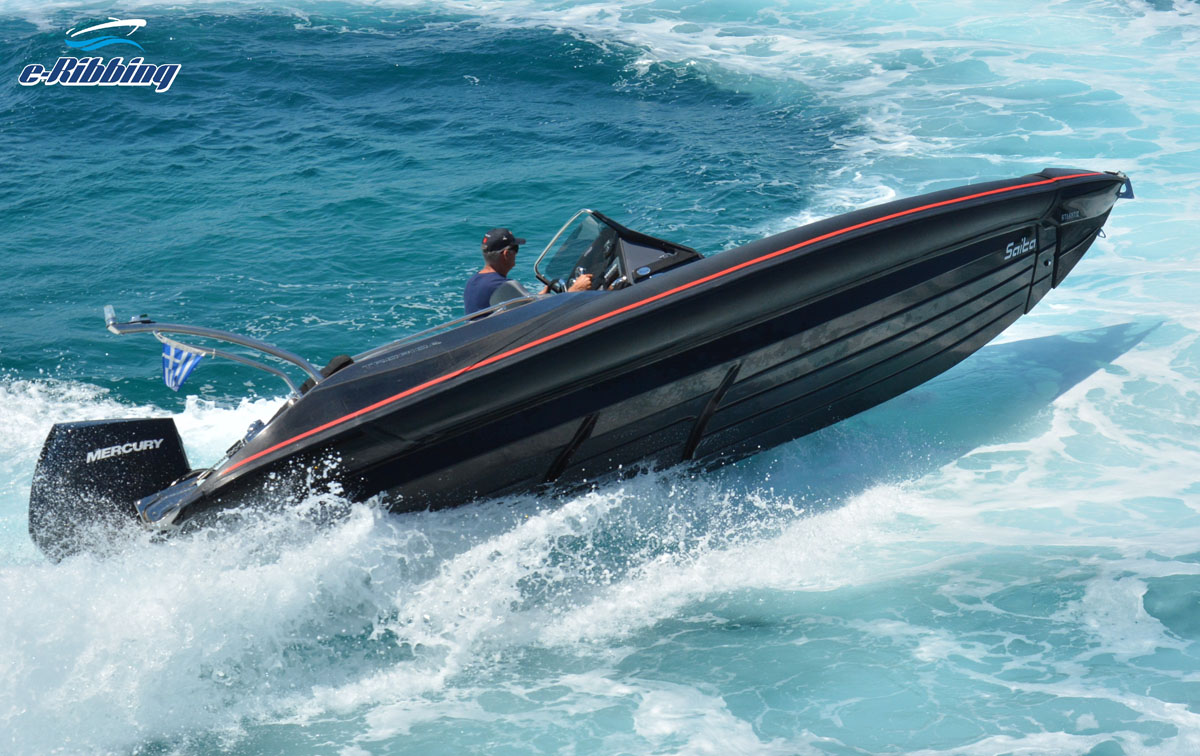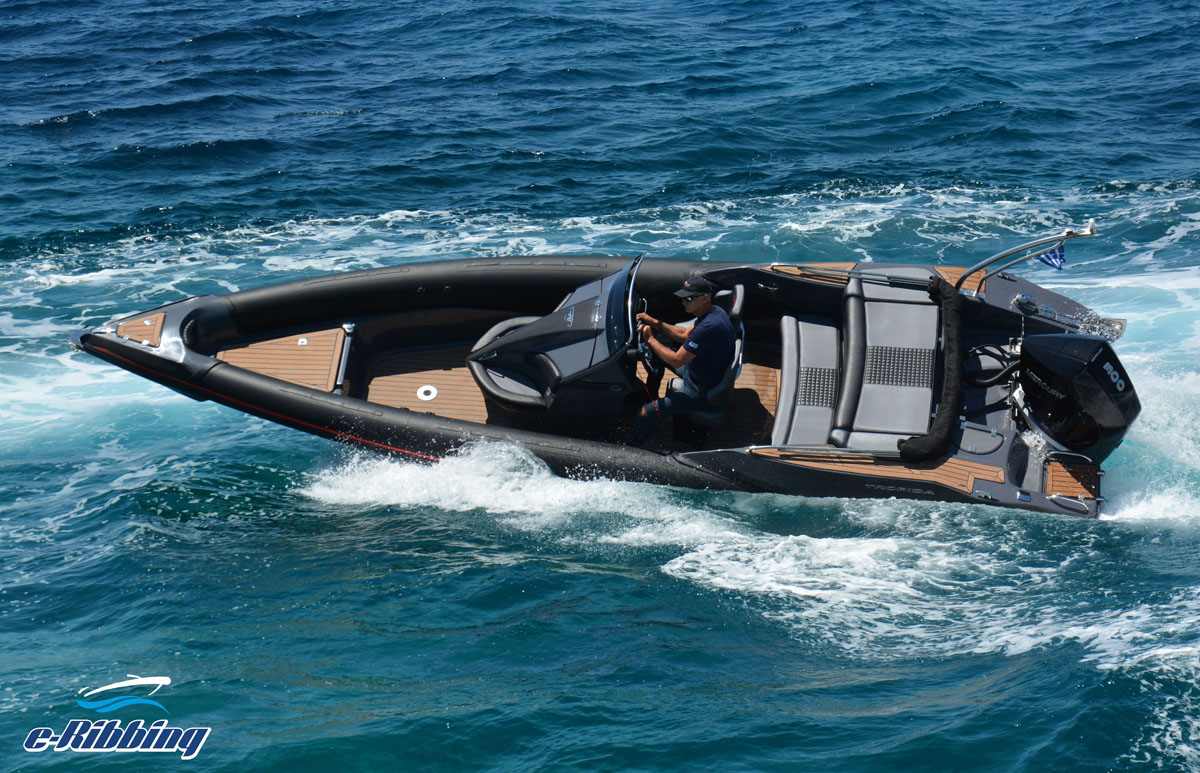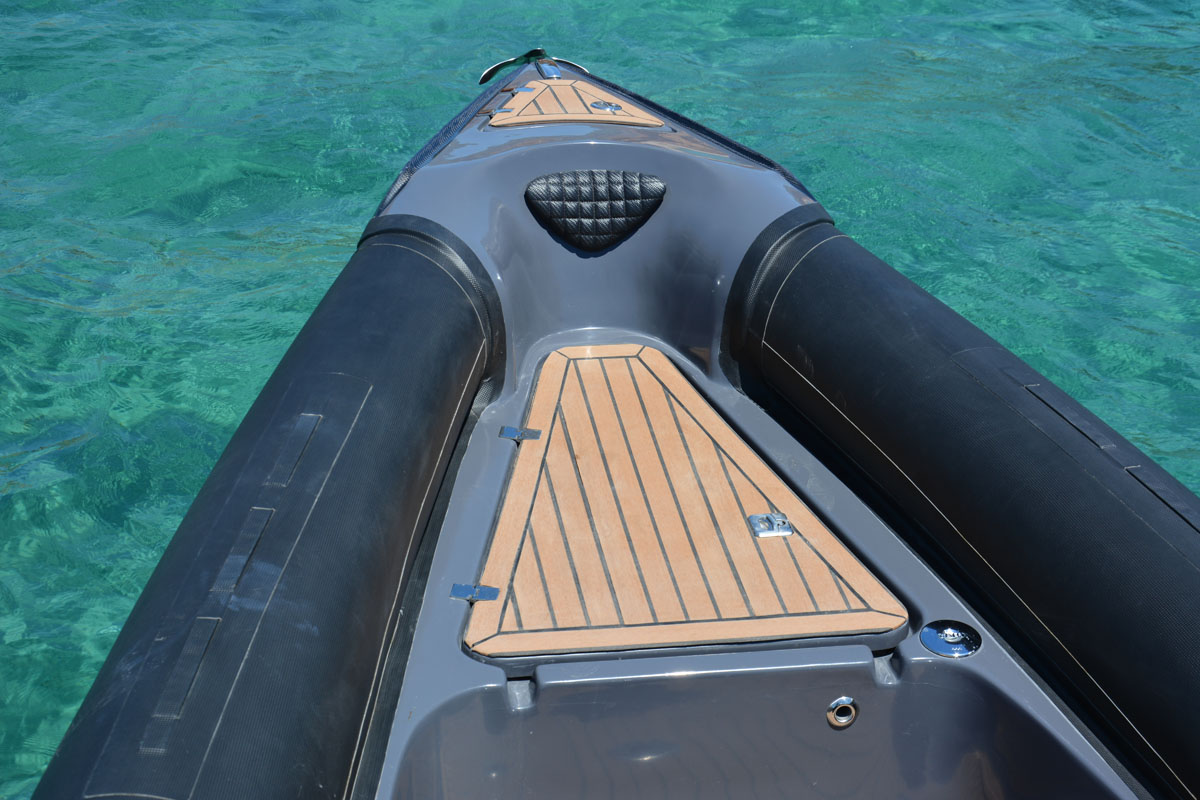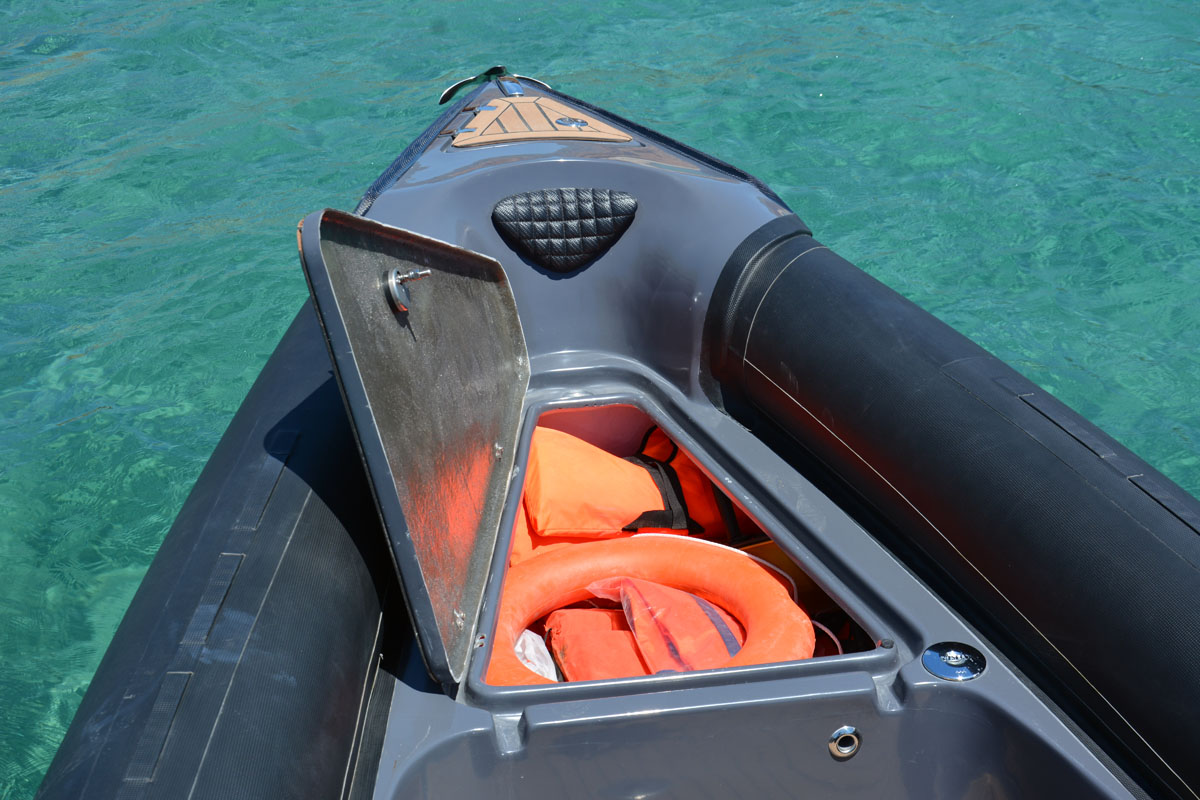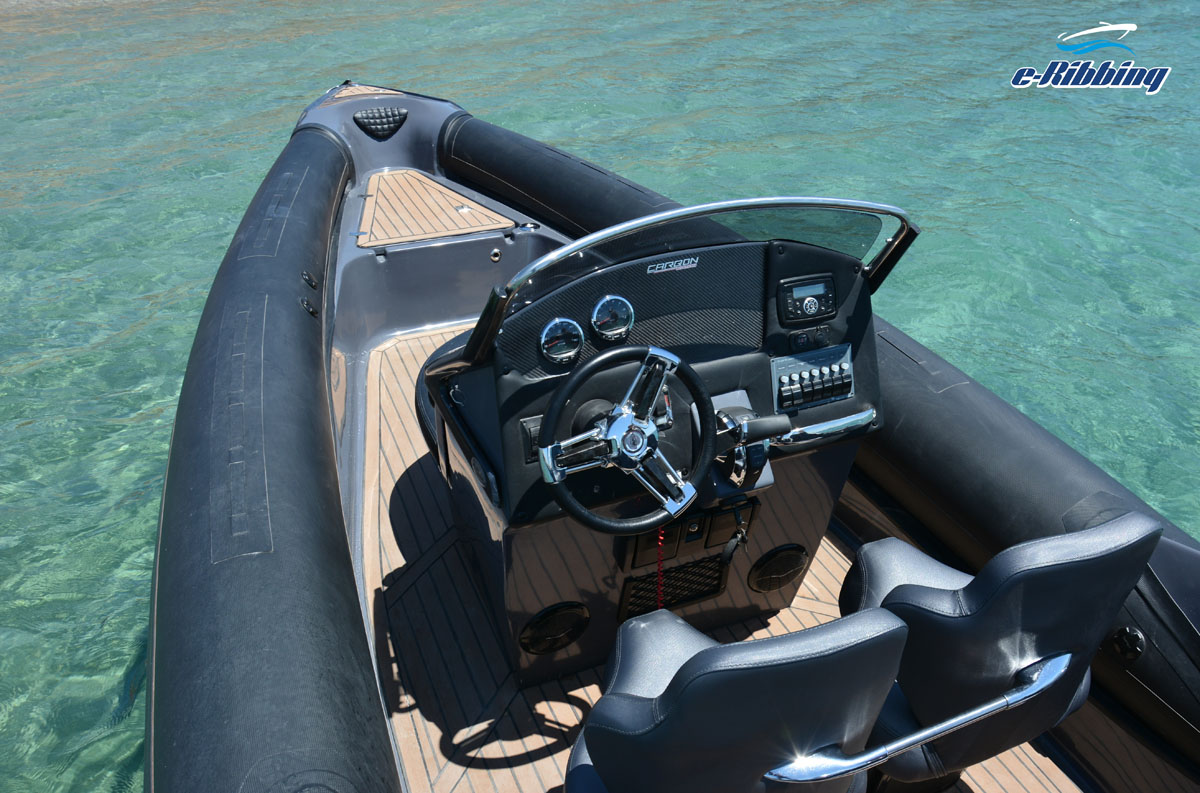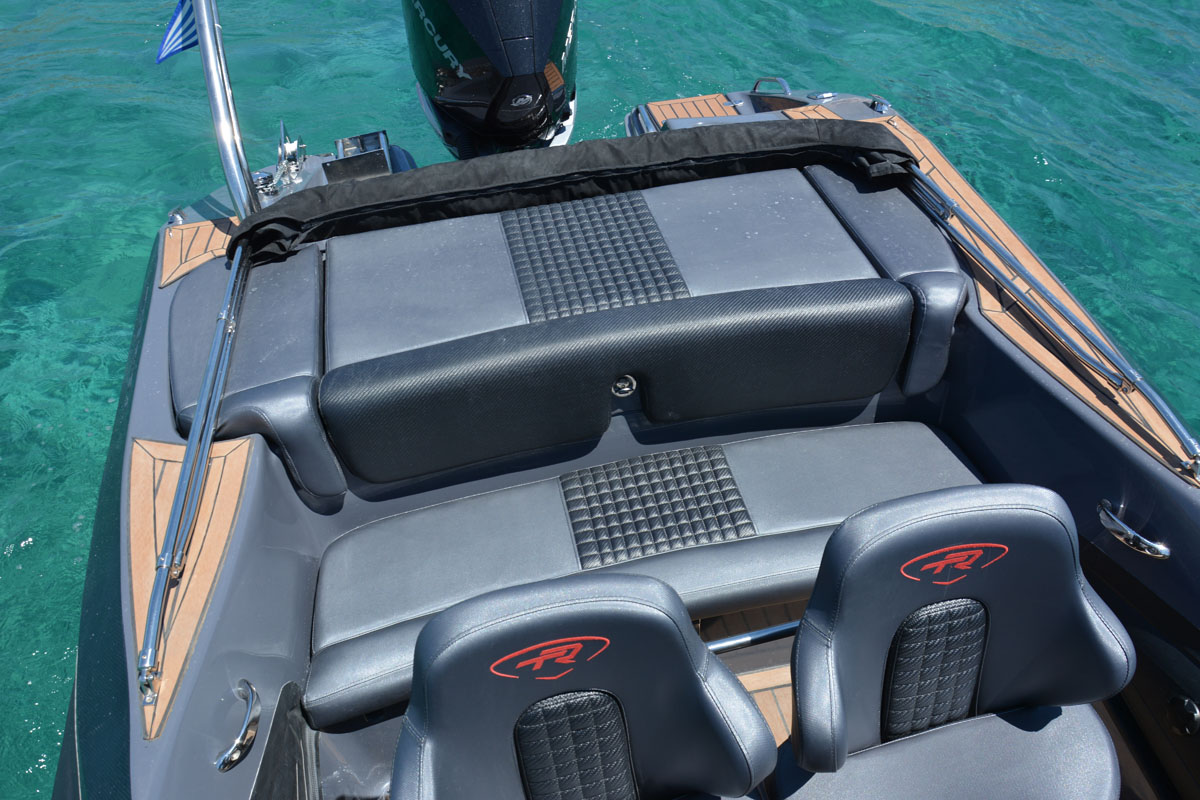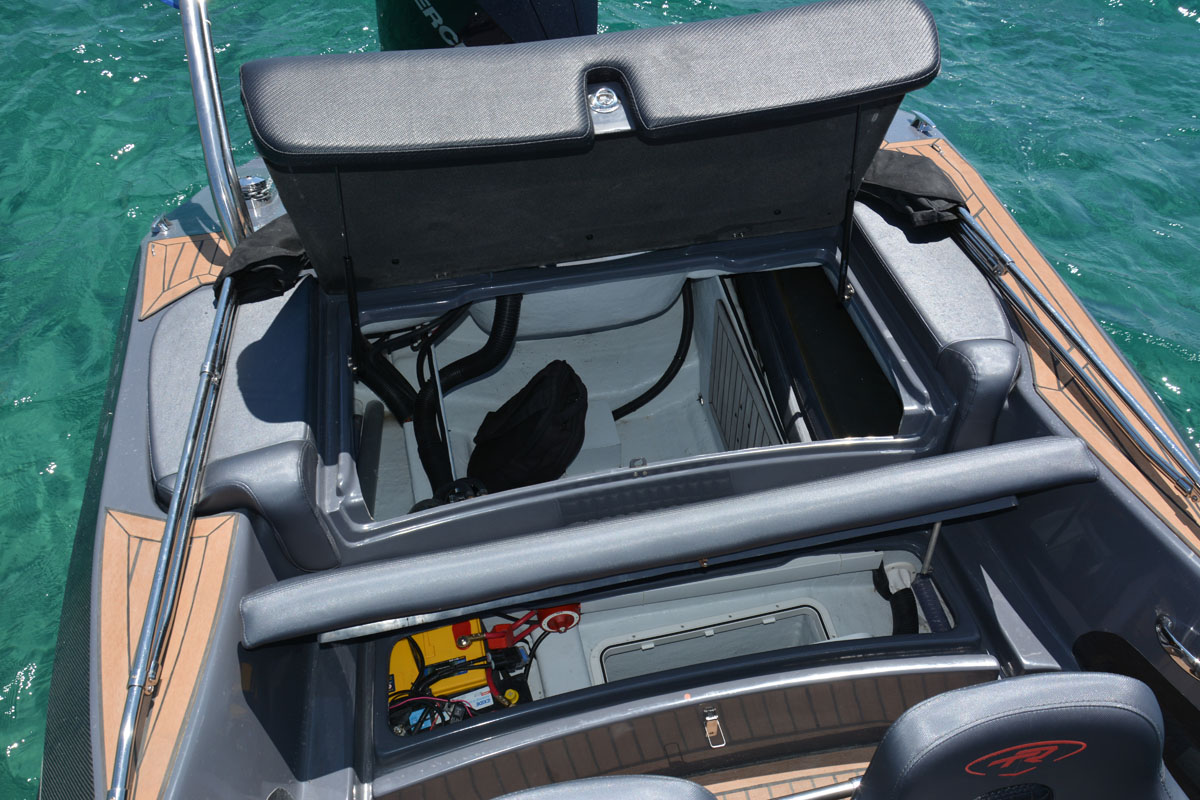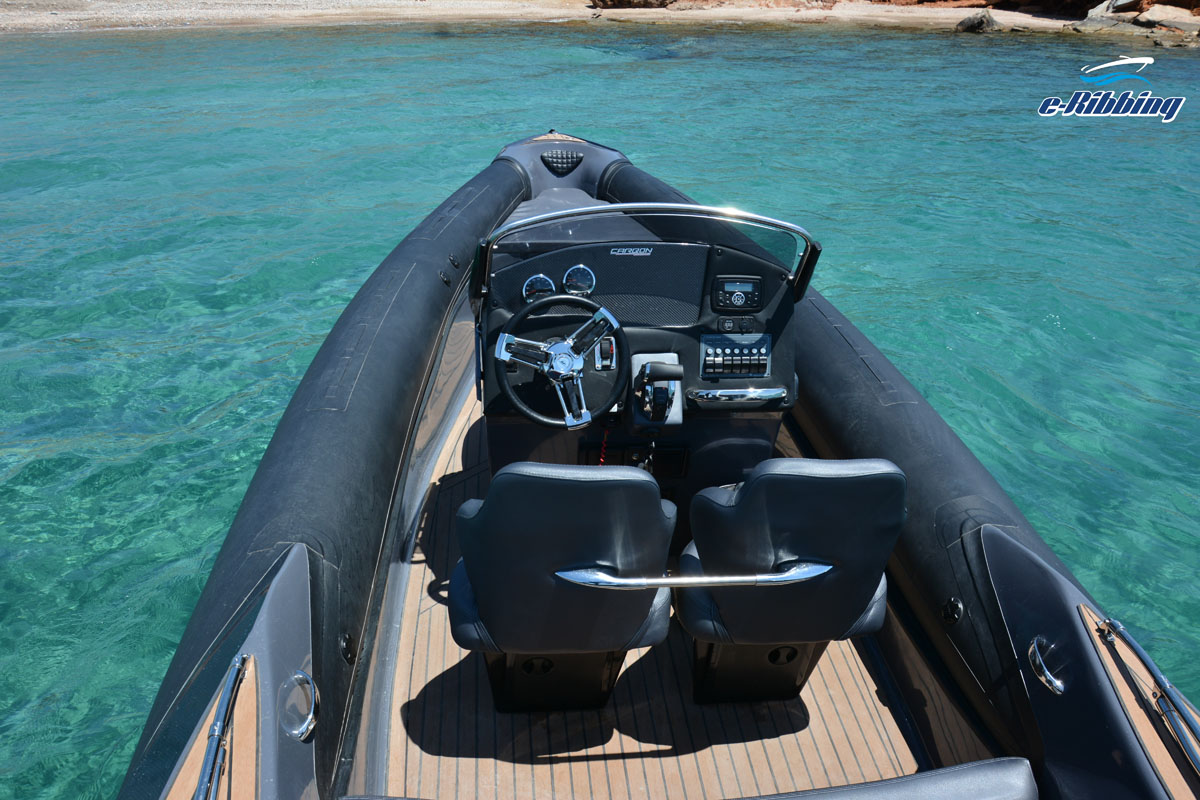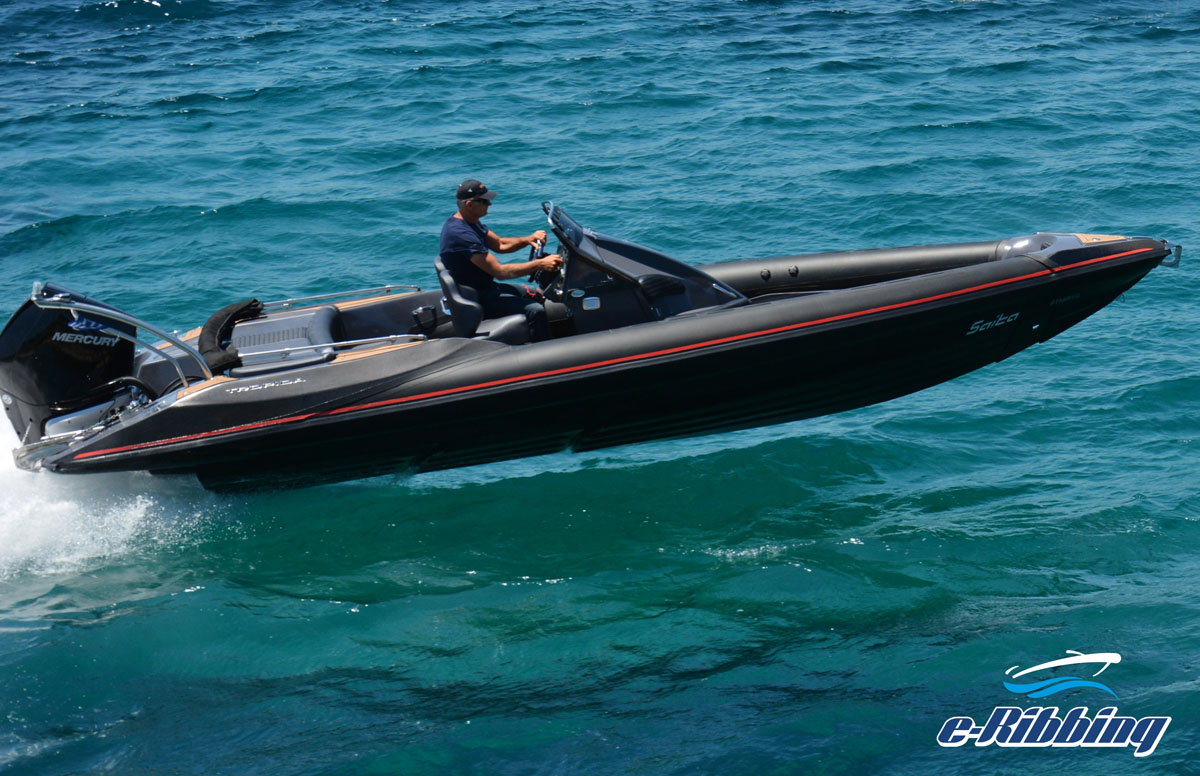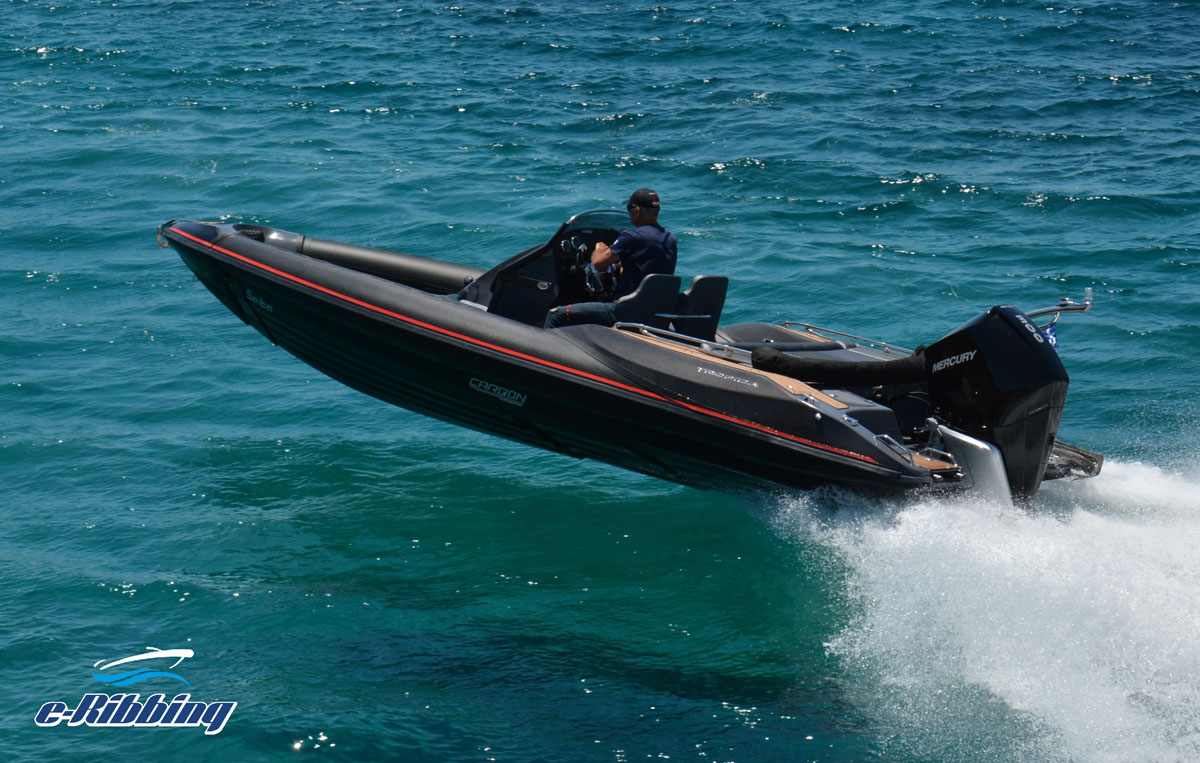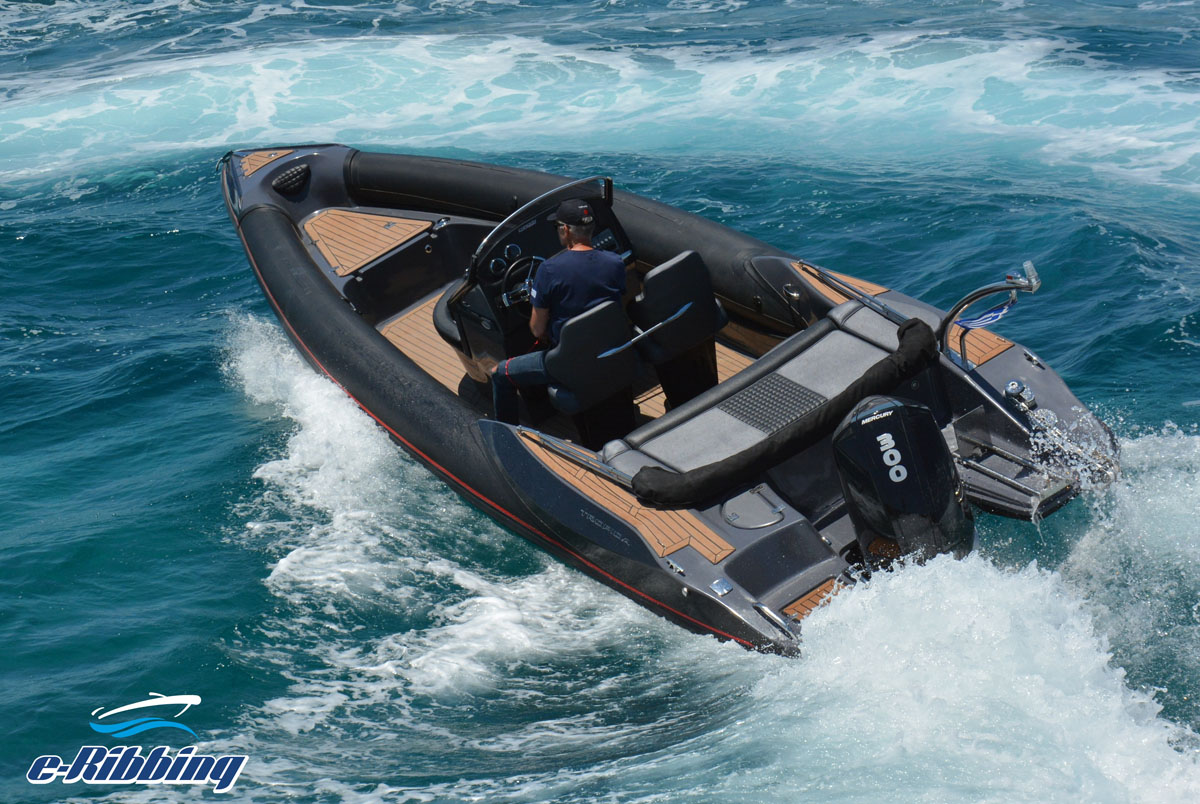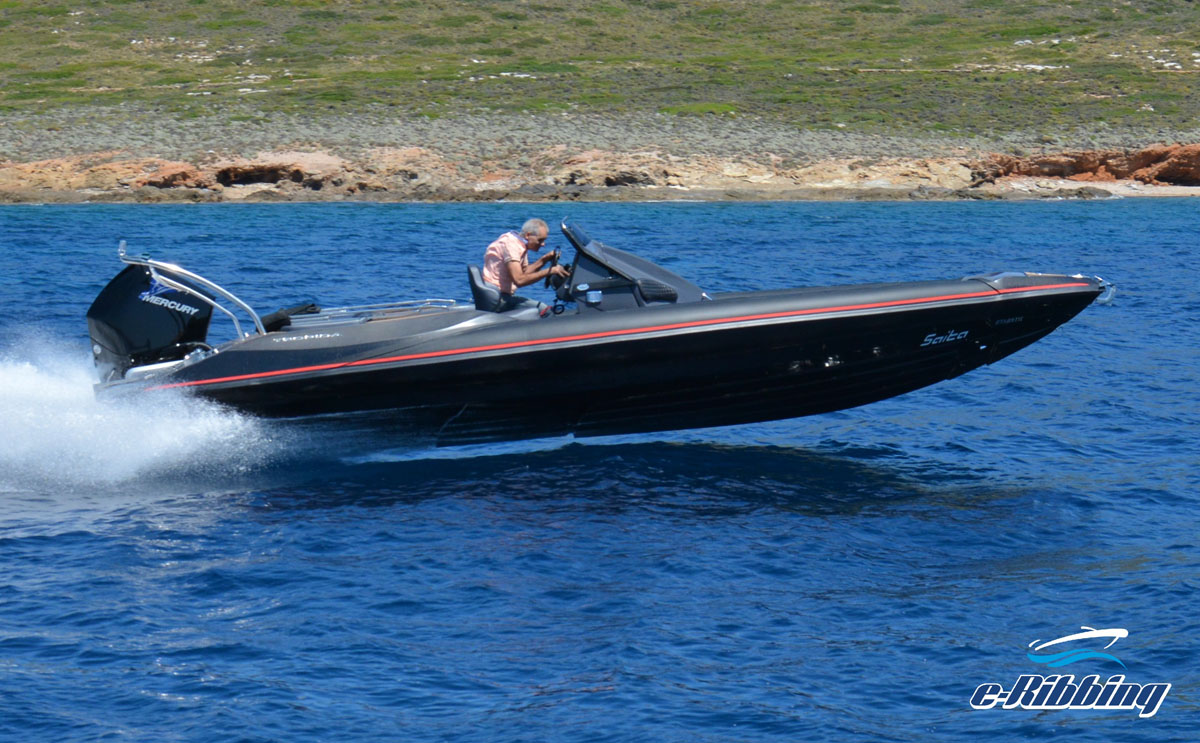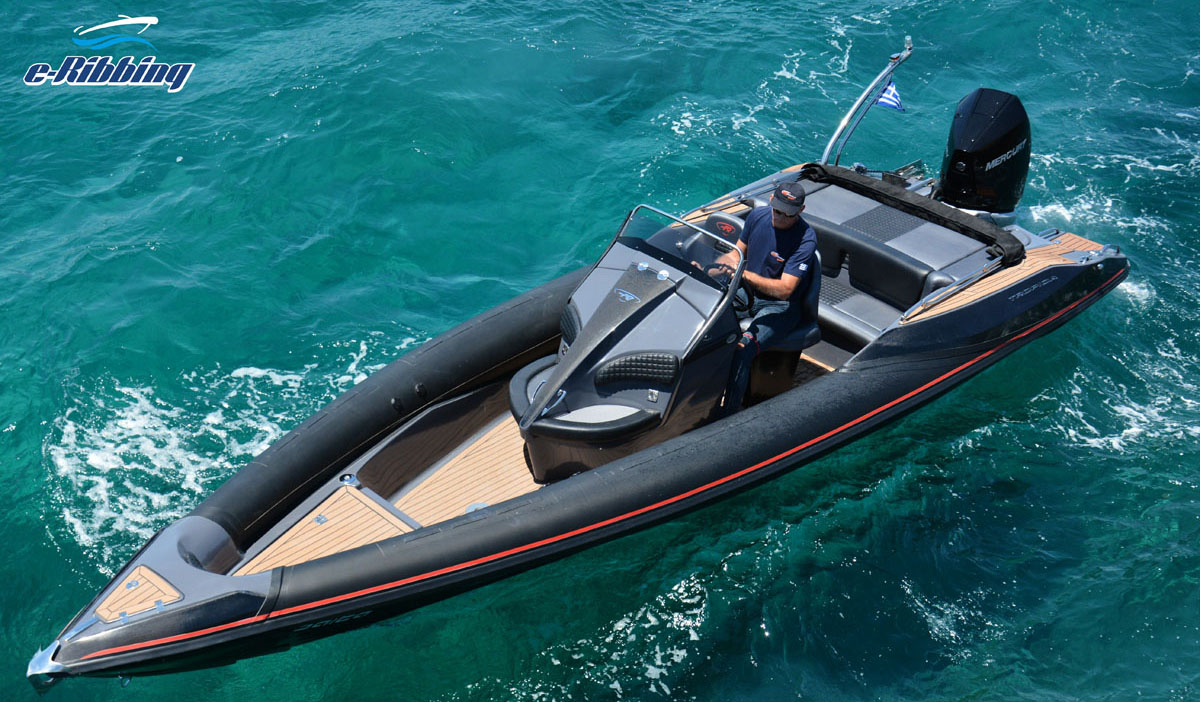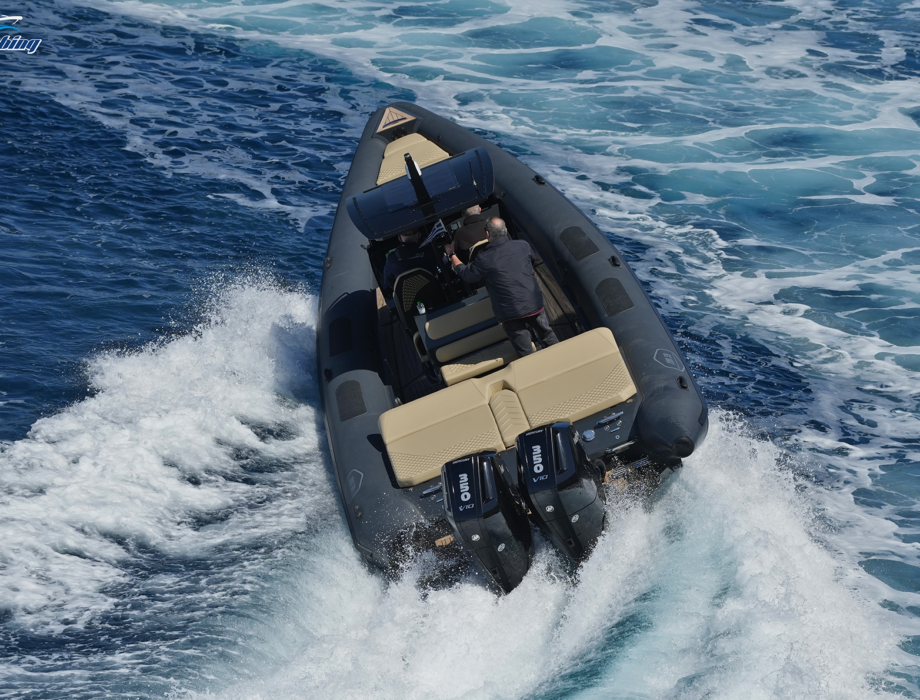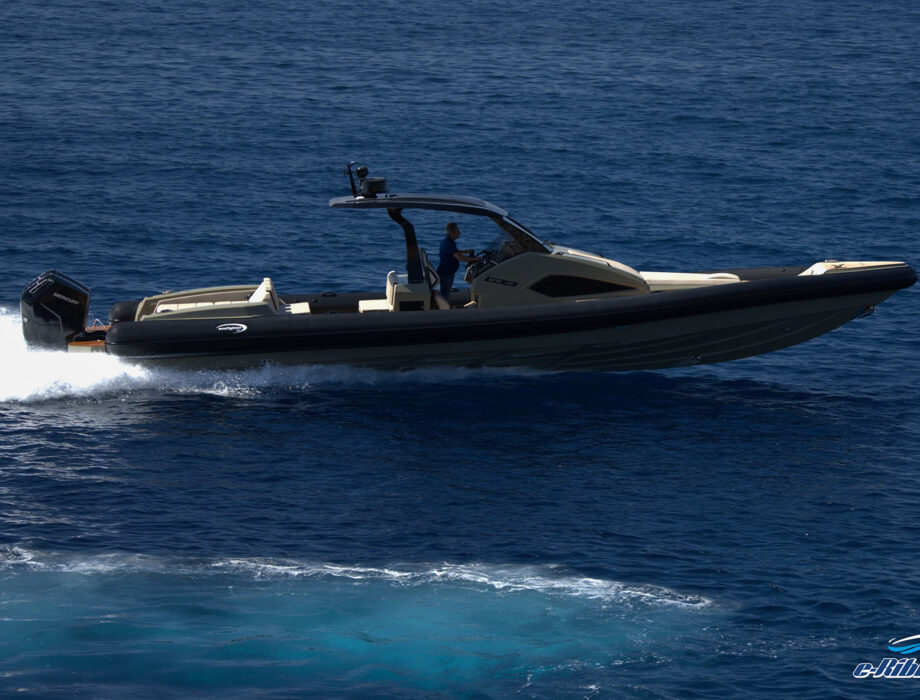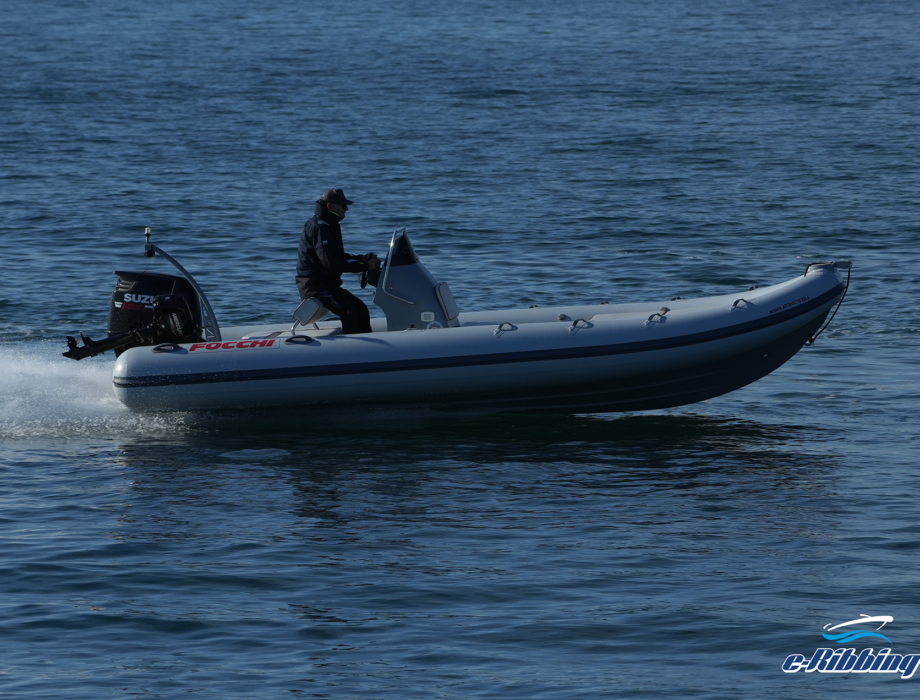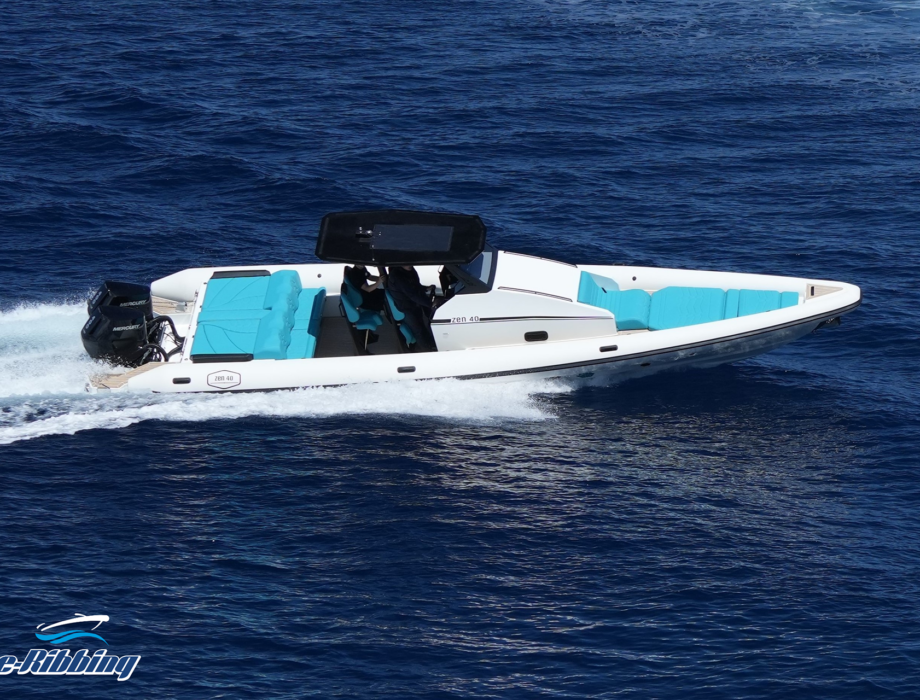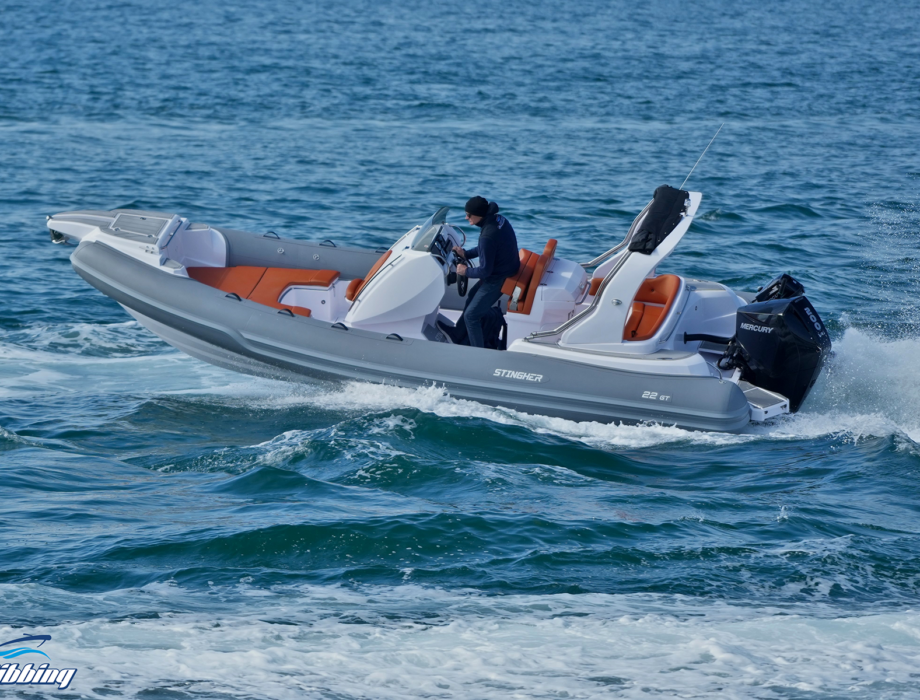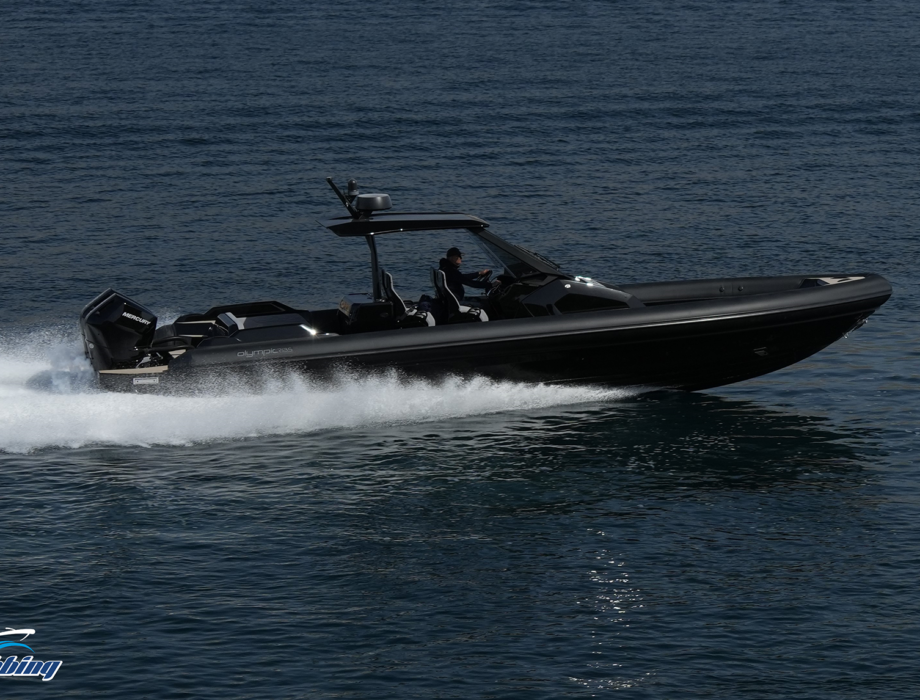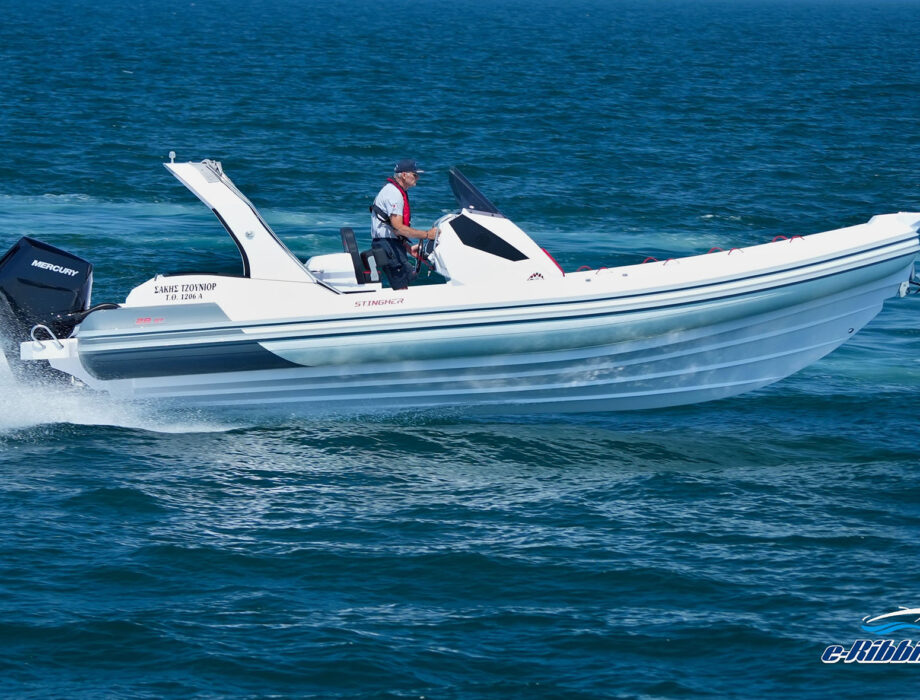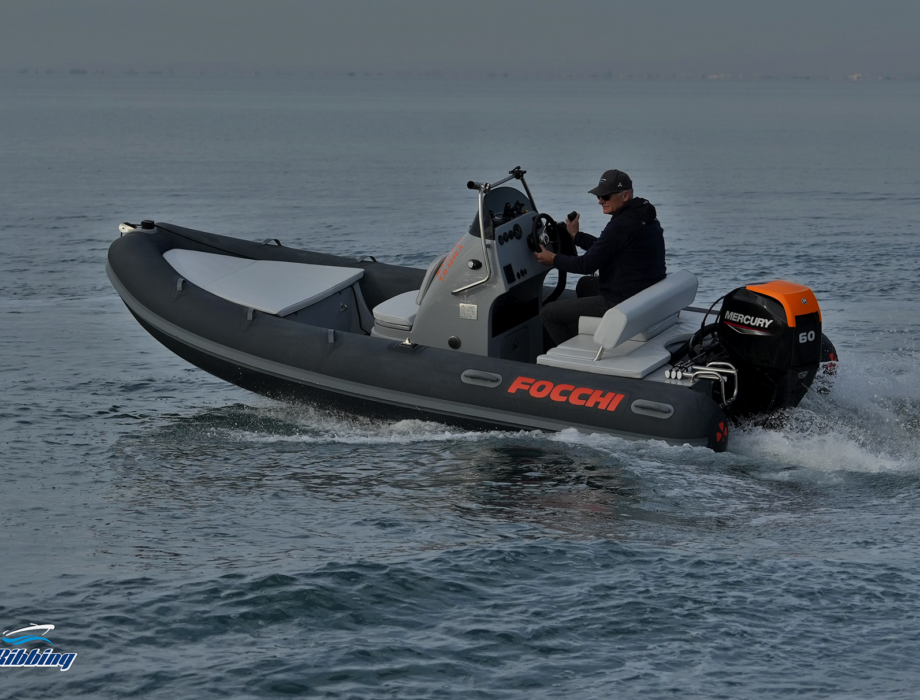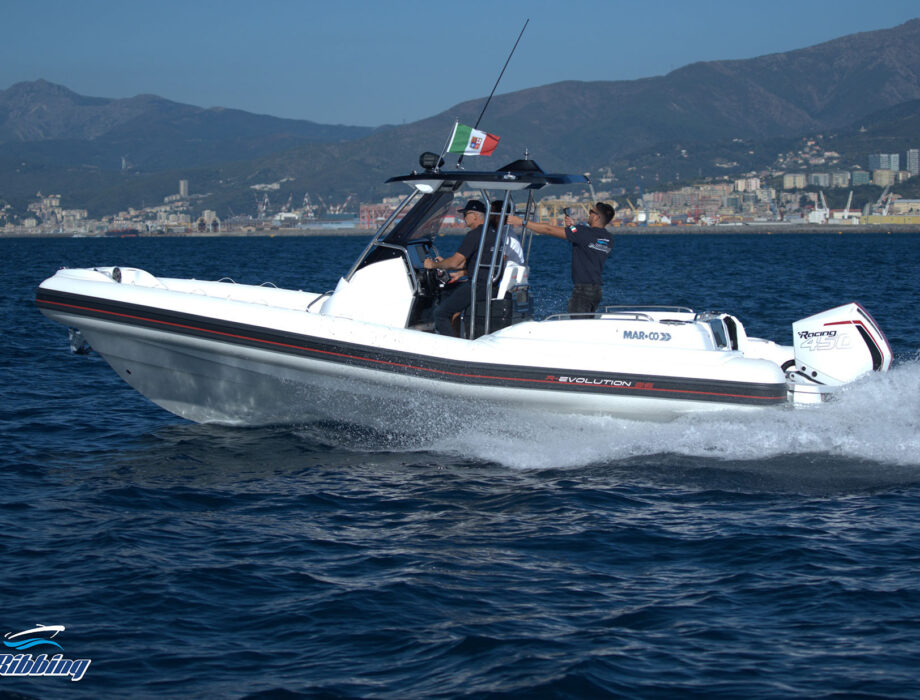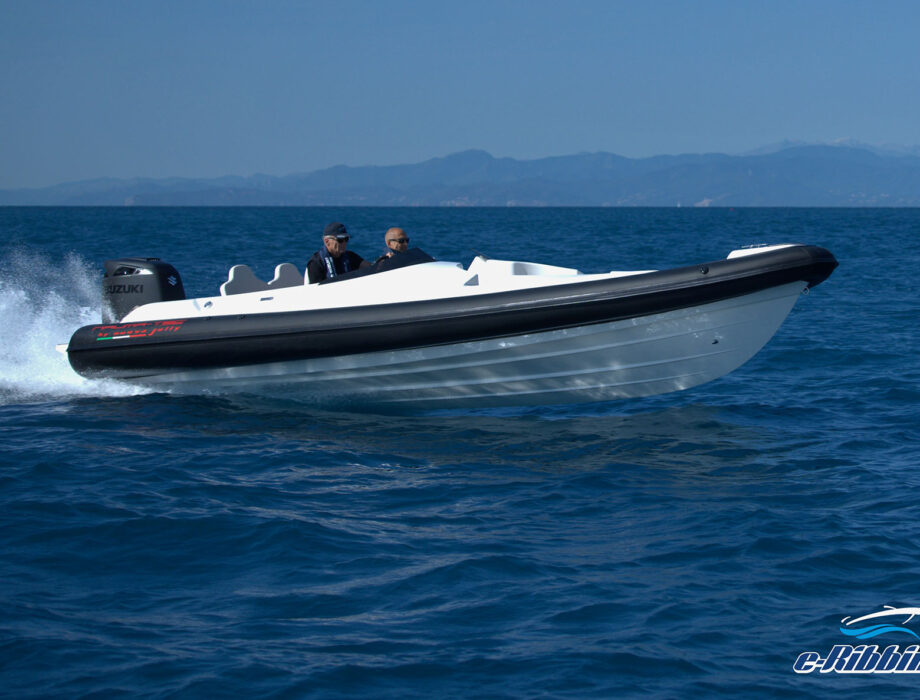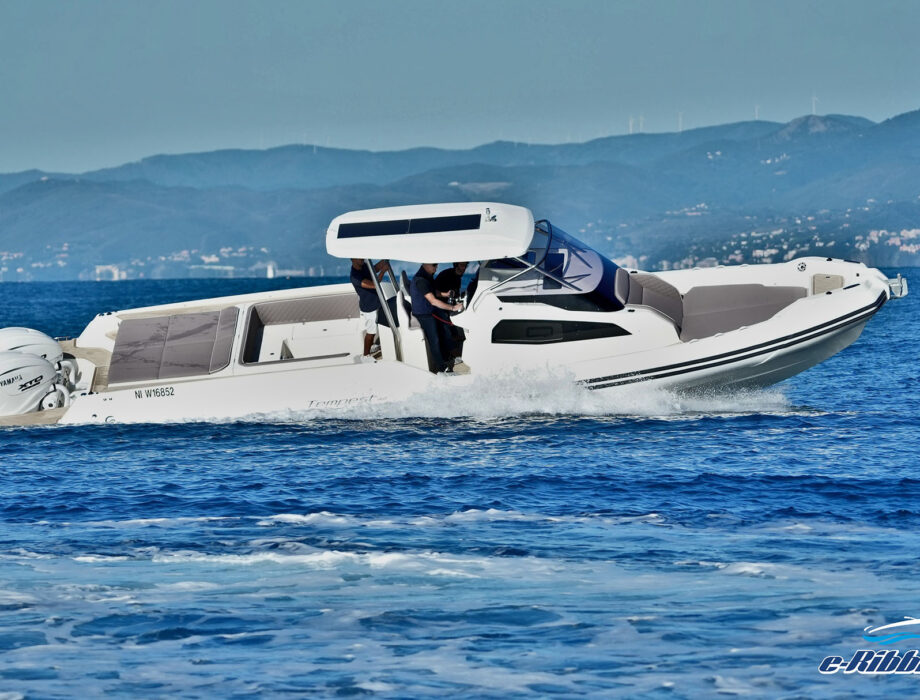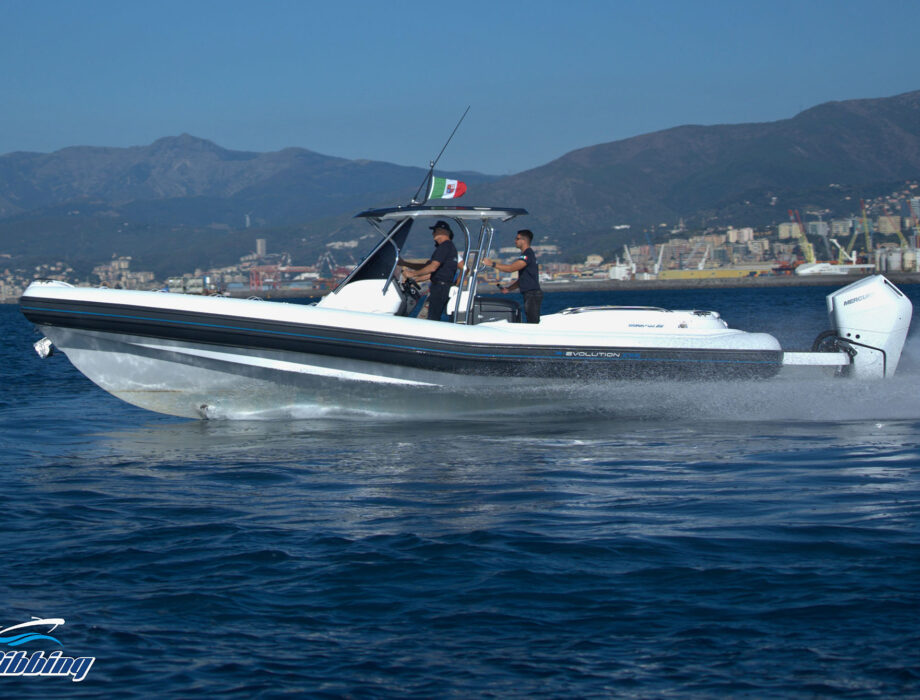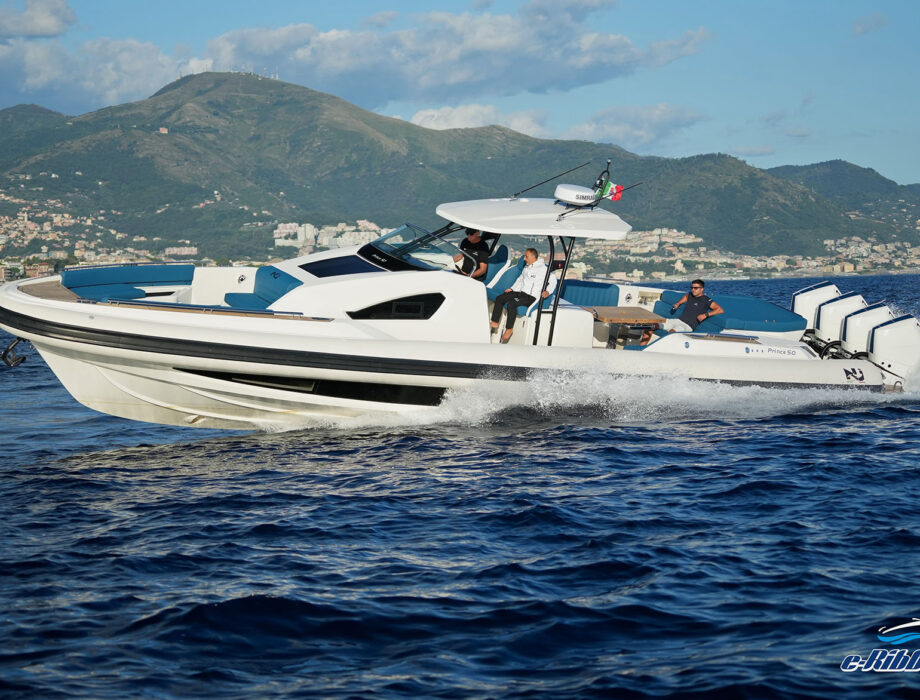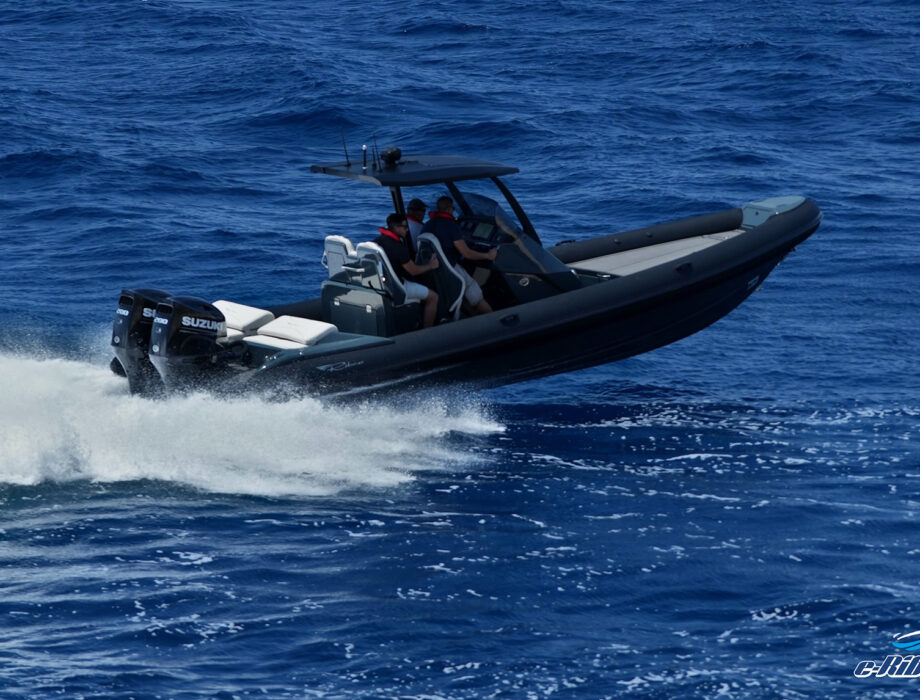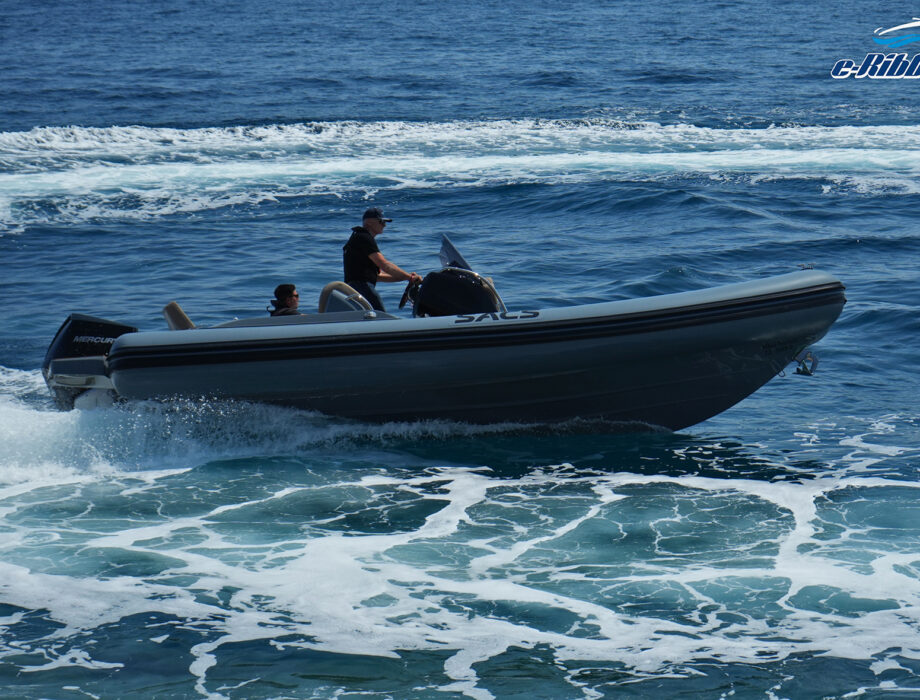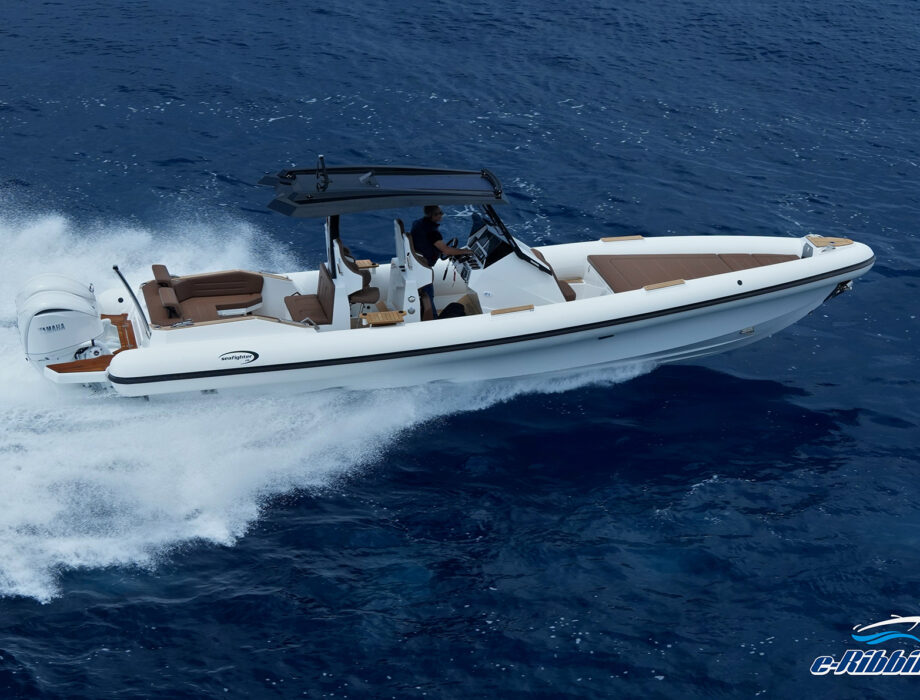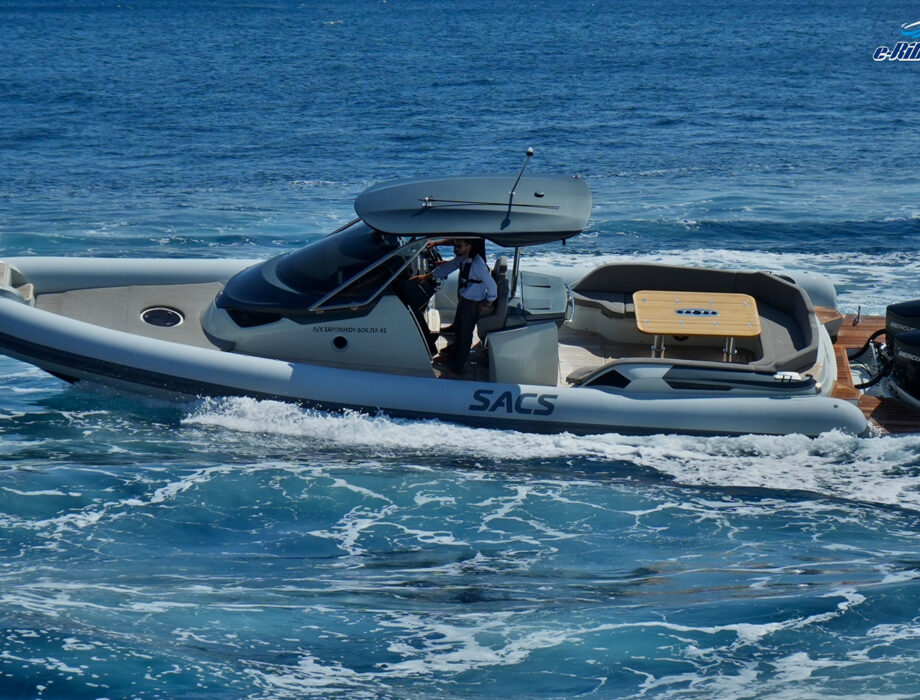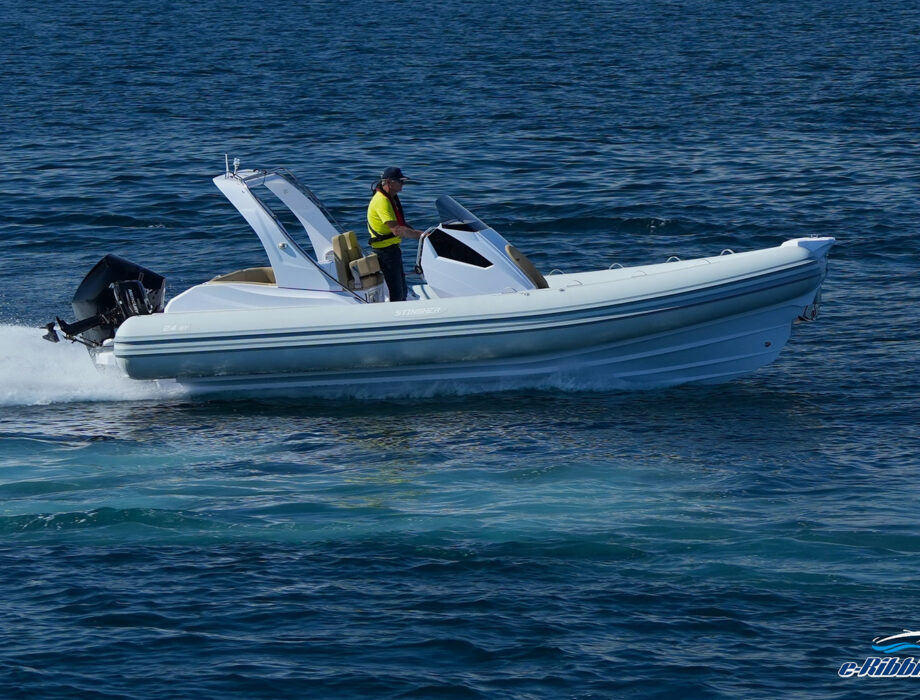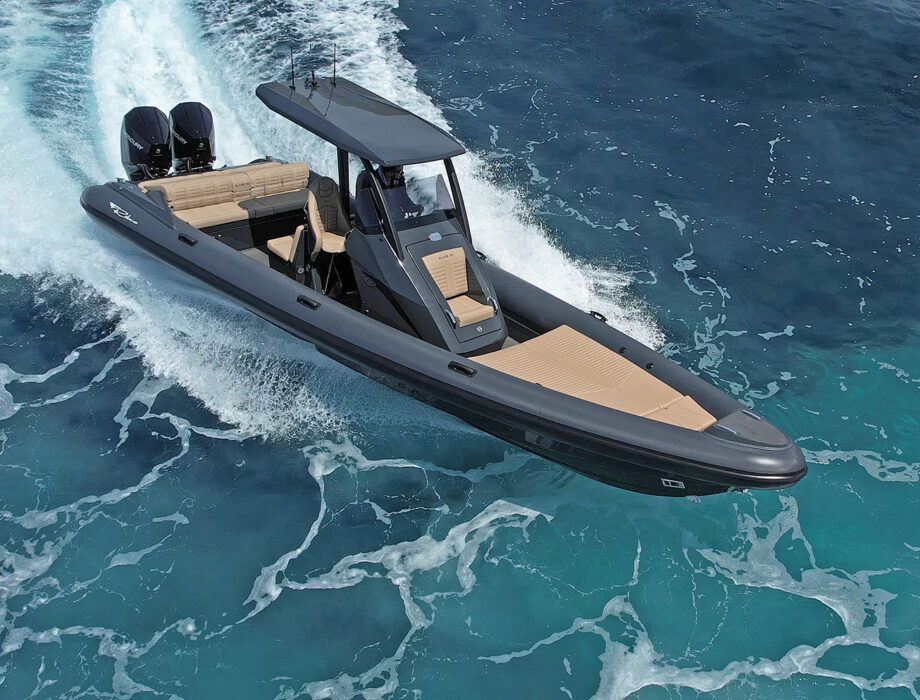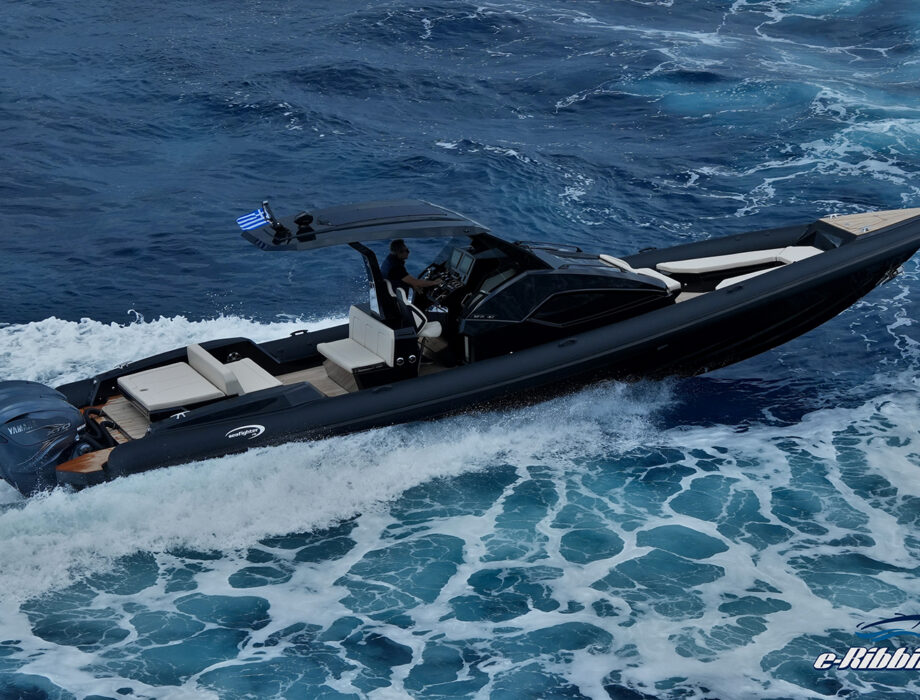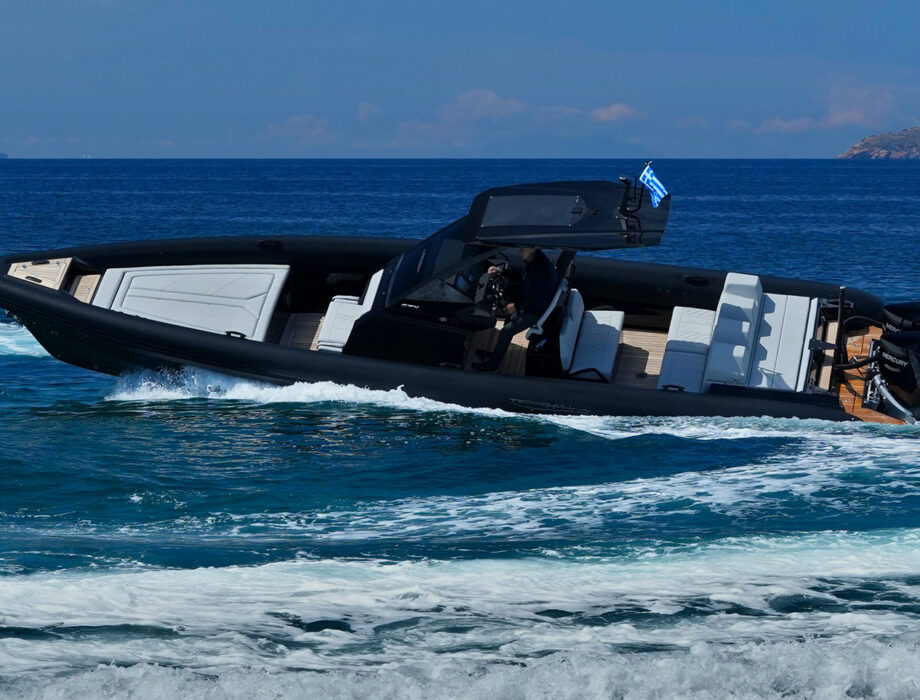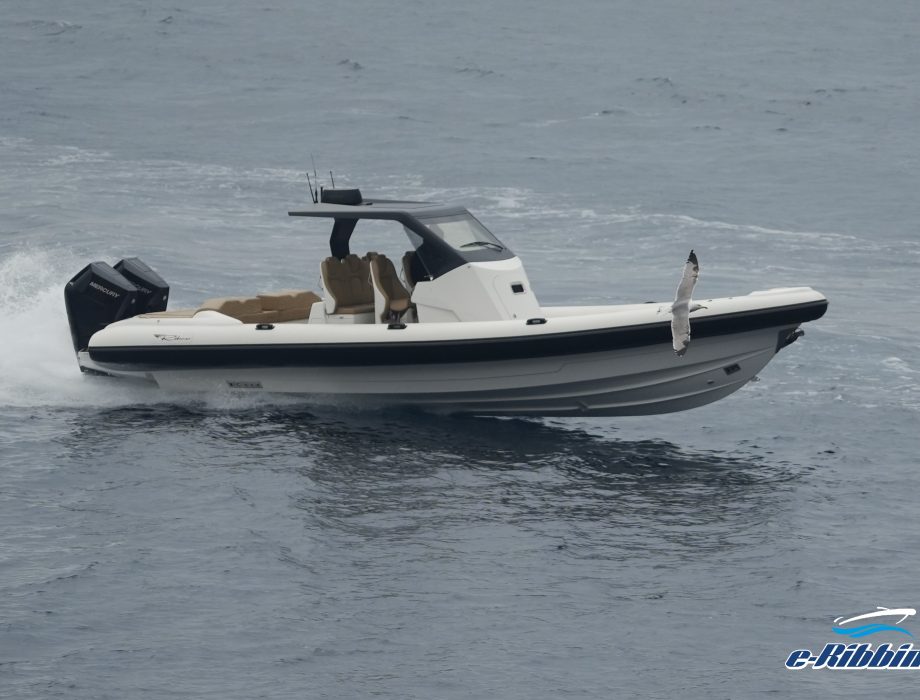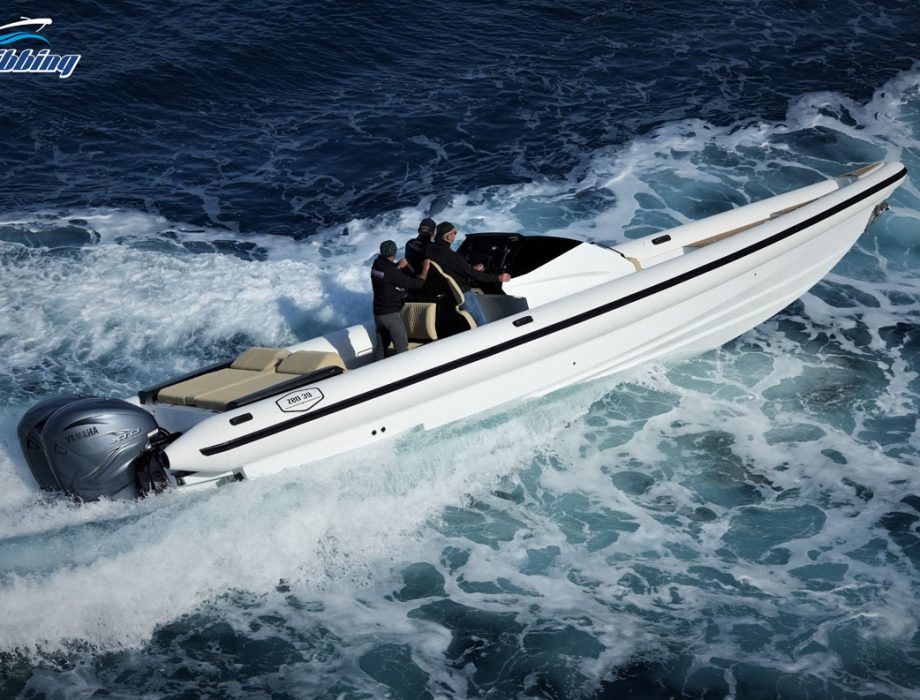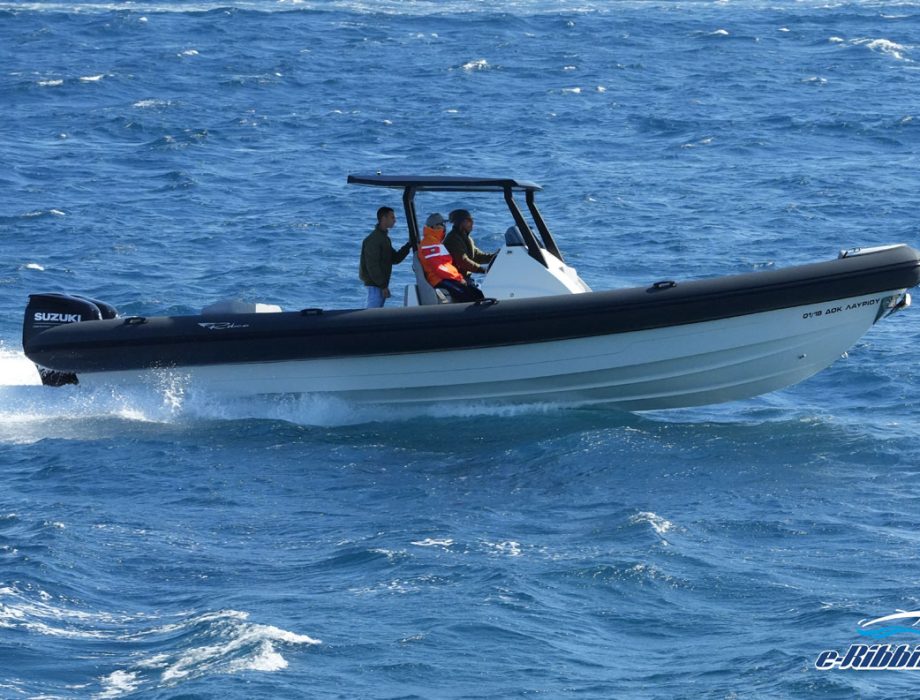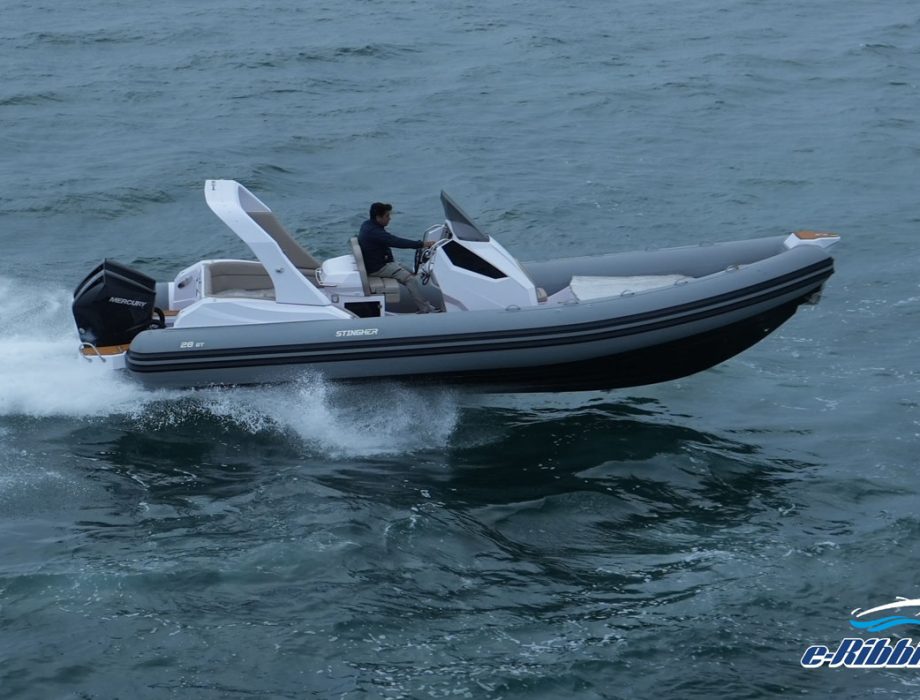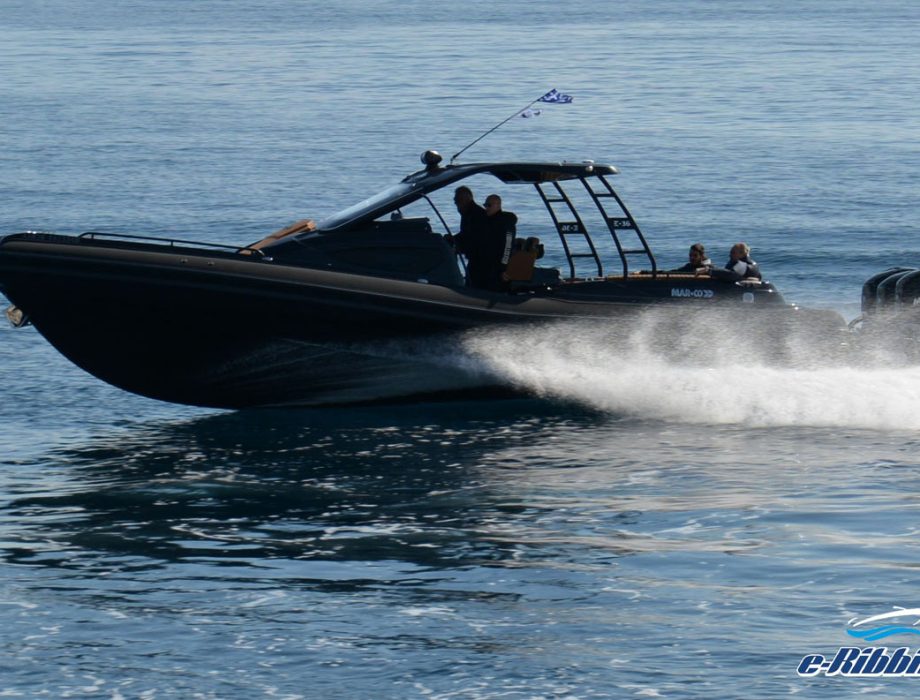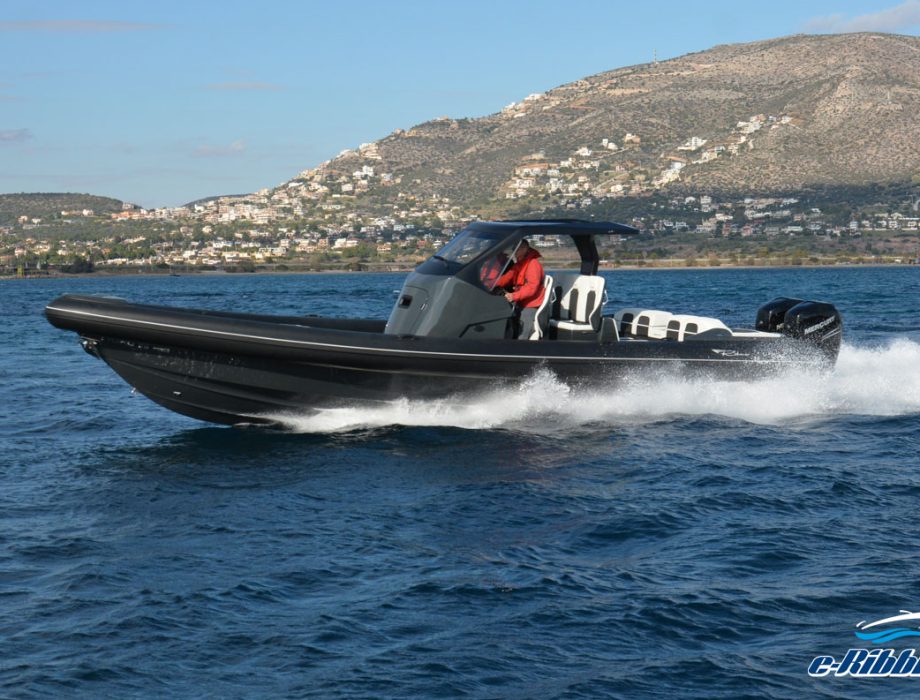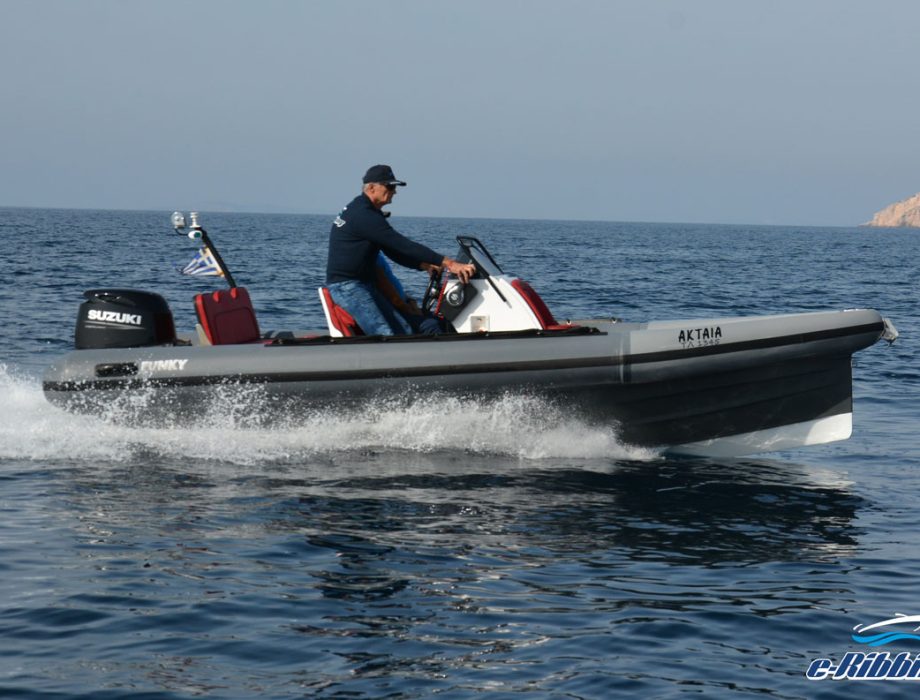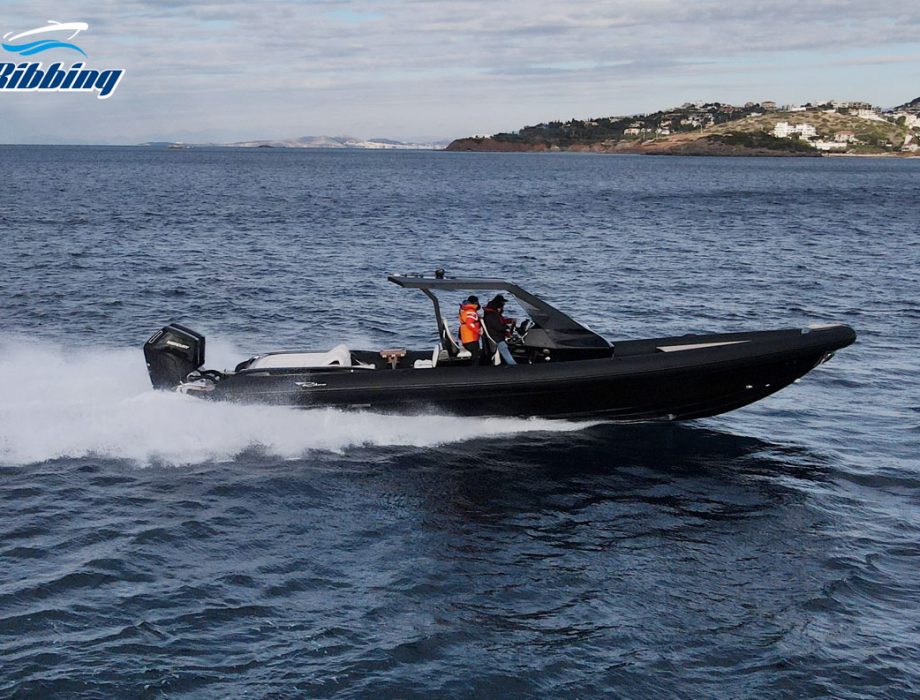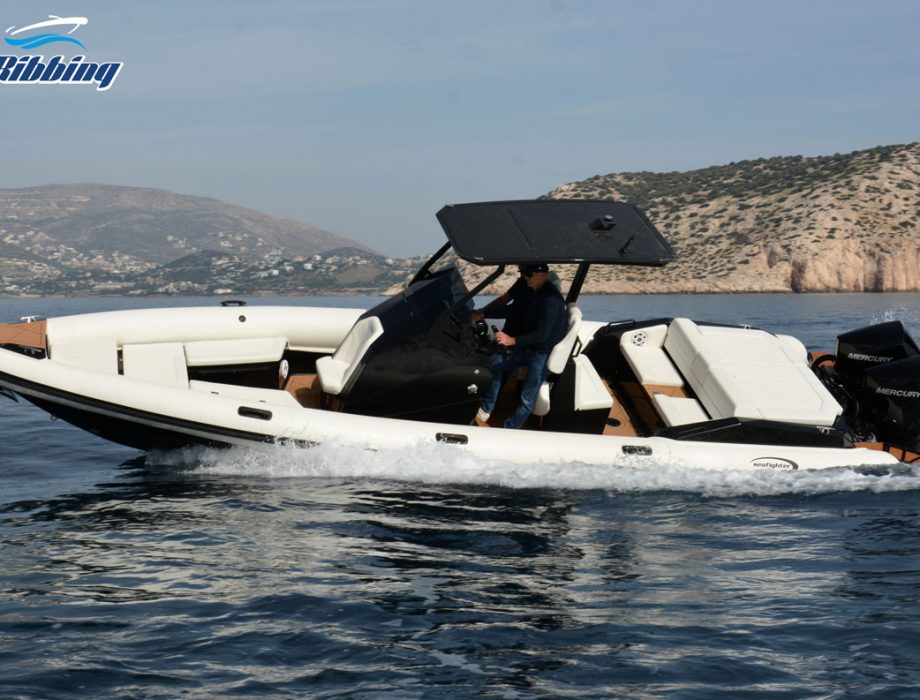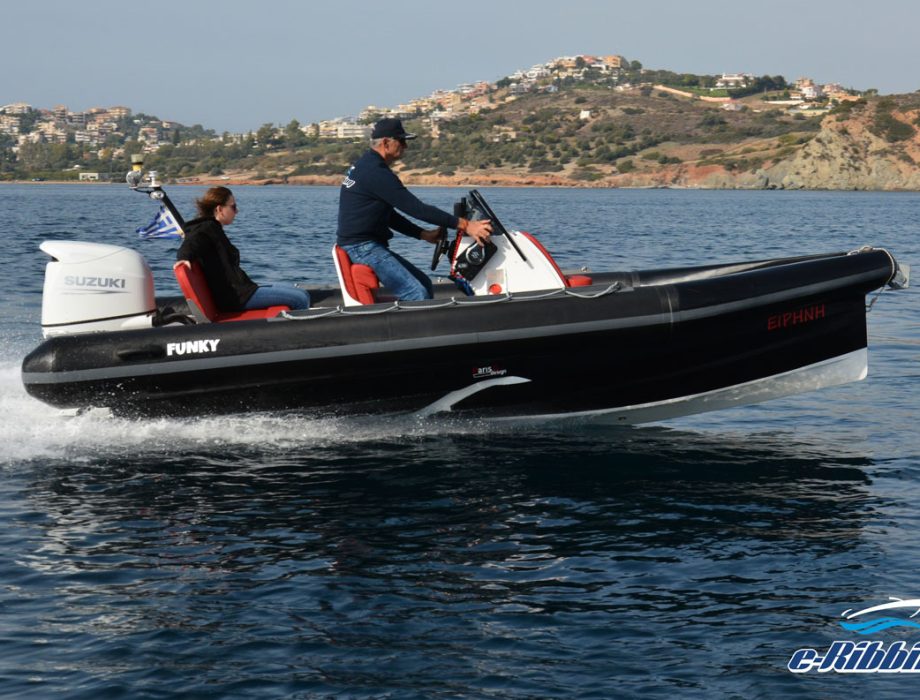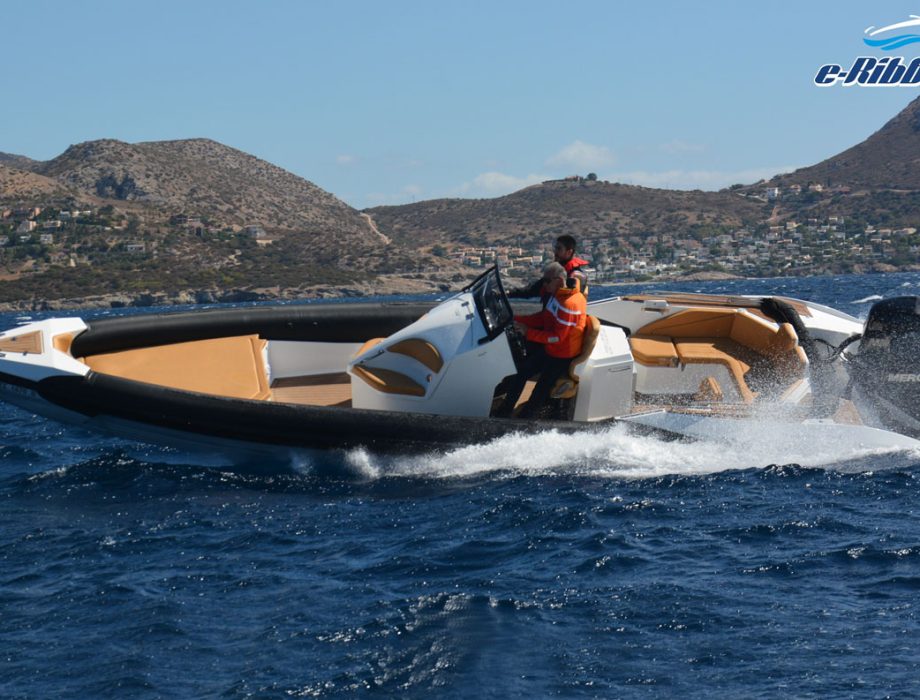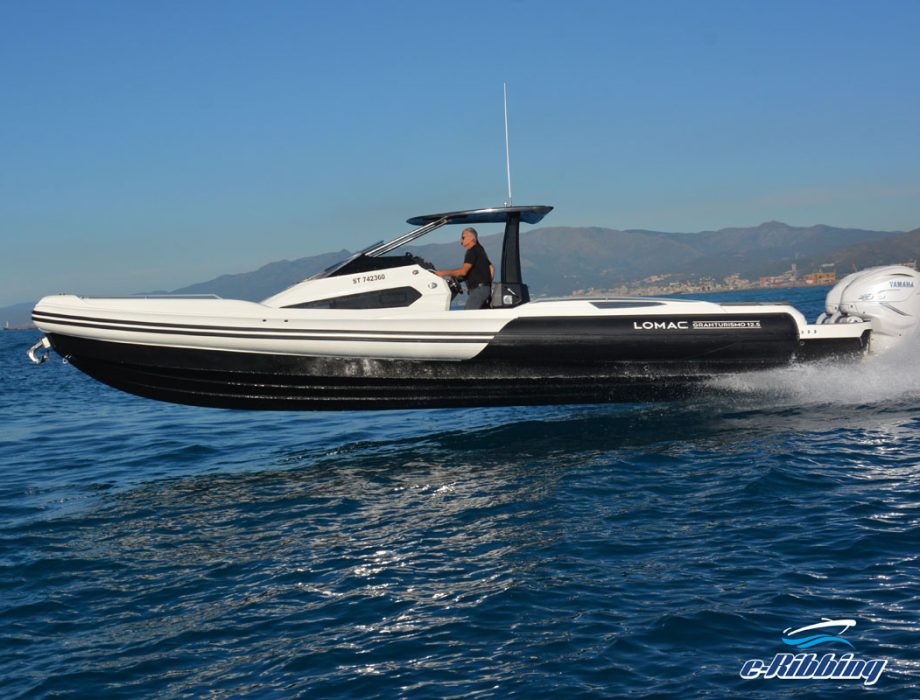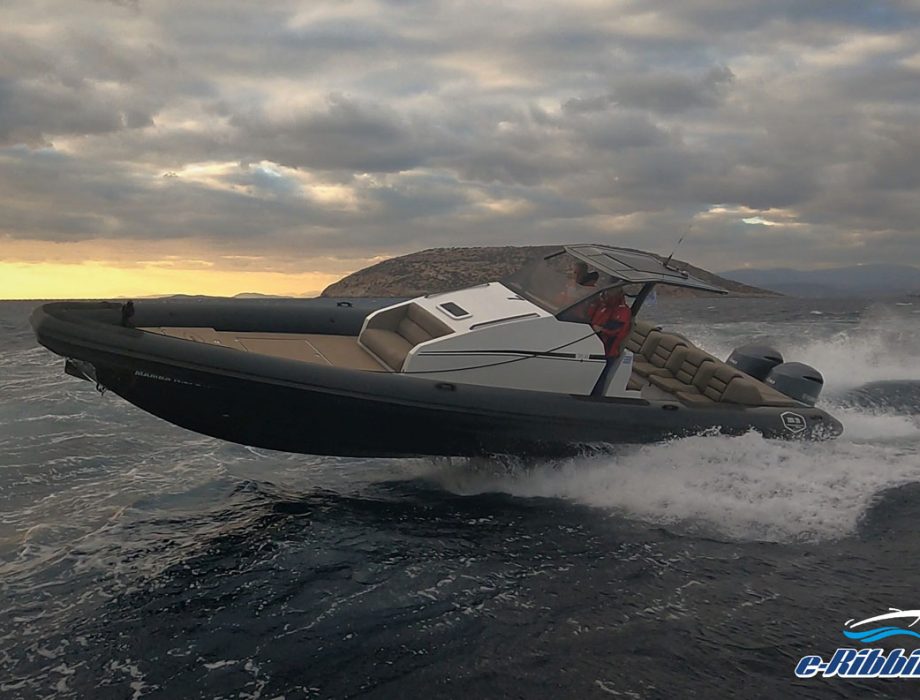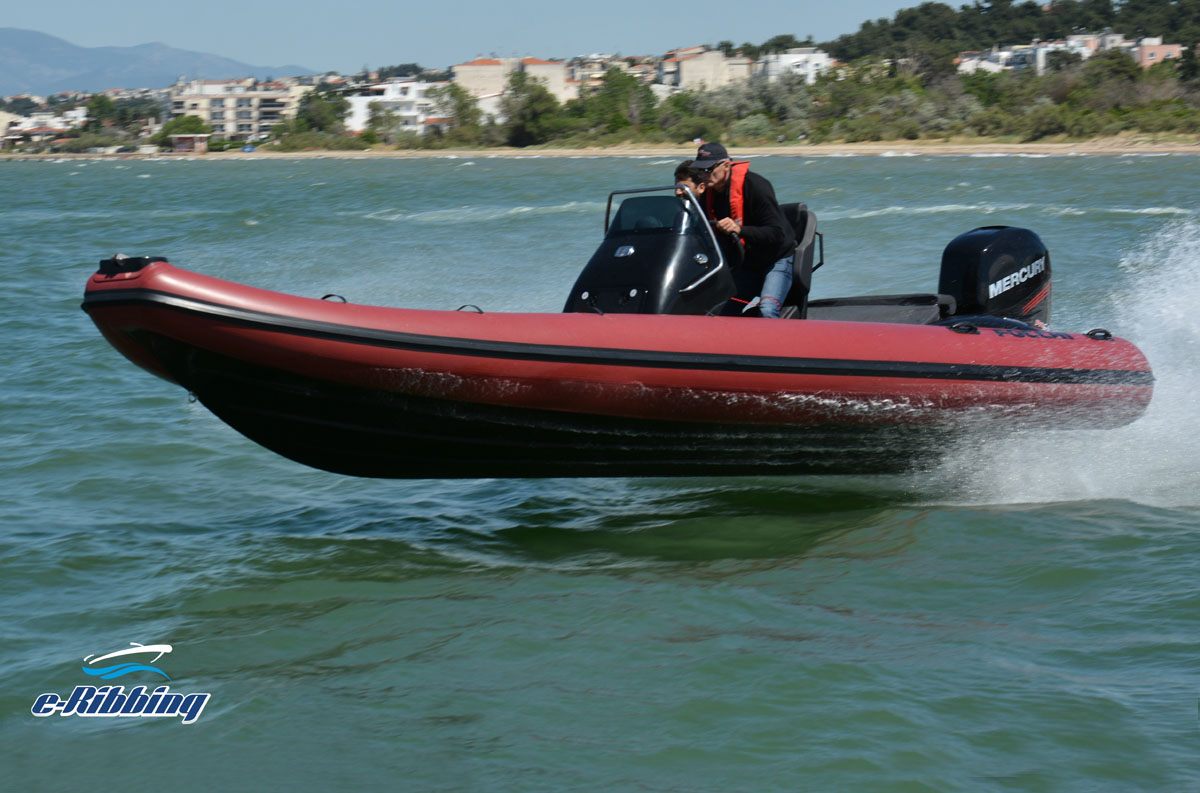
Focchi 7.30 – Six Cylinder Verado 275+hp
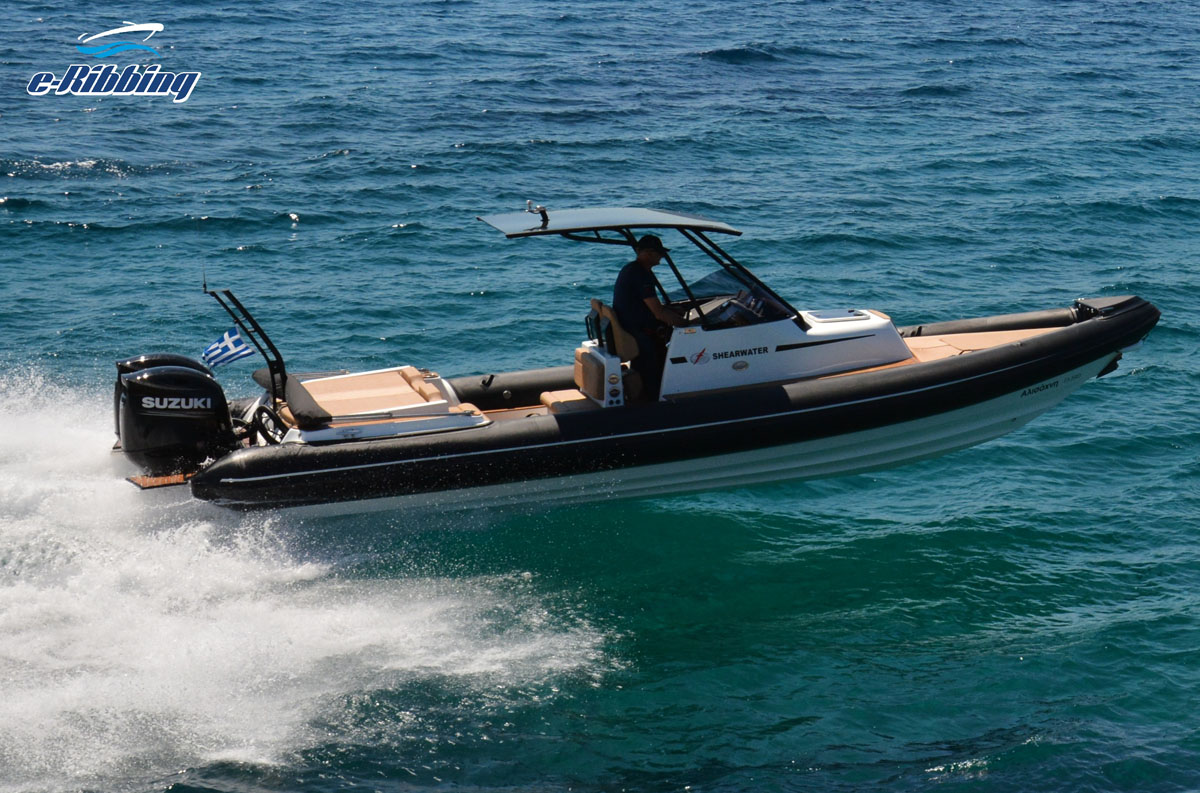
Shearwater 890 CC – Twin DF 175AP Suzuki

Focchi 7.30 – Six Cylinder Verado 275+hp

Shearwater 890 CC – Twin DF 175AP Suzuki
Saita 7.80 – 4.6L V8 Verado 300hp
If a Rib can plane in less than 3 seconds, stand on plane at low rpm and record very low fuel consumption traveling at an ideal cruising angle while achieving enviable high speeds, then it is certain that there is almost no room for further improvement.
There is no doubt that Saita 7.80 is a special high-performance inflatable boat with a particularly apparent aggressive design which combined with the excellent geometry and innovative features of its hull promises fast and enjoyable ride.
TROPIDA is a dynamically rising company in the field of inflatable boats, which focuses on safety, comfort, economy and performance, using high tech materials such as triaxial fiber, isopthalmic polyester and vinylester while stringers are built without the use of wood, thus increasing the rigidity, robustness and durability of its products.
Adopting the deep V in the bow, the technology of ventilated steps and the double chine, TROPIDA hulls manage to be extremely soft in rough seas, always maintaining the proper ride attitude, keeping the spray away from the deck and passengers.
Saita 7.80 runs on a 7 meter long hull, which is the result of the collaboration of Adam Younger and Takis Samartzis. It is characterized by the presence of two small bow steps which reduce the resistance and the reaction of the bow when it comes in contact with the waves, thus preventing stuffing and minimizing deceleration, especially when traveling in following seas.
With a 58-degree bow entry and a transom deadrise angle of 24 degrees, Saita 7.80 hull has two ventilated steps with a four-centimeter degradation up to the transom area.
Intergraded with the transom of the boat, a polyester bracket is formed which occupies the entire width of the hull, has a length of 31 cm and is located 19 cm higher than the keel. With a slight upward tilt, it helps significantly when moving to the planning phase without participating at all during the ride.
On deck
What really stands out at first glance is the special emphasis on build quality of Saita 7.80, the choice of components and aerodynamic design, which as we know very well plays a very important role and affects the performance of each boat at high speeds.
The hard nose follows eaxcty the aerodynamic profile of the boat, ending in a sharp acute angle, emphasizing even more its aggressive character.
It offers easy and safe entry and exit from the boat, having its upper surface completely clean and free without the presence of elements that prevent our access.
That’s why otherwise the anchor was chosen to be placed lower and comes out of a small opening located under its edge.
The superstructure of the bow has limited dimensions, thus ensuring the maximum possible usable deck space, but it can be quickly converted into a comfortable sun bed with a length of 1.90 meters and a maximum width of 1.20 meters, with the adjustment of the corresponding additions.
The console of the Rib has a very innovative and aggressive design that certainly attracts our attention. It has two separate single seats in its front part, which rises and reveals a large storage space that can be easily turned into an independent toilet.
It is centrally located, with the lower part being narrower to increase its port and starboard passageways, facilitating our forward and backward movement.
The instrument panel is elegant with the proper space for the placement of the necessary navigation devices and has the appropriate inclination for their immediate inspection.
The steering wheel is positioned to the port while the engine control is located centrally and to the right there is a handle for holding the co-driver.
Two separate bucket helm seats rest on low polyester constructions, are oriented mainly for a sitting driving position, offer the necessary sense of safety and provide very good lateral support which is necessary when developing high speeds or when attempting sharp turns.
Behind is the stern couch which with a width of 1.50 meters can accommodate up to 4 people. Directly behind the backrest of the stern couch is the aft sunbed with dimensions of 1.90m x 0.70m, below of which there is the largest storage space of the boat.
To the port of the engine basin there is a very small but so useful locker for placing the stern anchor of the boat and the mooring lines.
At sea
Our test Rib was the Carbon Edition, which of course is a purely polyester construction with only a few carbon "accents" on the console, on the side surfaces of the hard nose and the stern.
On the transom of Saita 7.80, a 4.6L V8 300hp Verado was hung, which with a reduction ratio of 1.85: 1 was turning a 14 5 / 8΄΄ x 23΄΄ 3-blade Mirage plus stainless steel propeller.
The southeast wind that was blowing on the day of our test in the Lavrio-Makronissos Strait exceeded 10 knots, creating ideal wave conditions for the evaluation of this particular Rib.
Having the waves against of my bow and observing the extremely aggressive line of the boat in front of the console, I immediately succumbed to the temptation and without even thinking I nailed the throttle forward violently pushing the engine to release all its power.
After a little lag that was clearly due to the design features of the specific propeller we were wearing, the Rib was ejected like an arrow and was passing with characteristic ease over the tops of the waves.
The sharp bow entry that means less volume, minimization of wet surface and therefore of the drag when the bow comes in contact with the wave, was the reason Saita 7.80 was slipping slightly and seemed to feel in the environment it "likes" showing us immediately its virtues.
Within a few seconds it developed a speed of 50 knots maintaining an ideal level running angle, offering us a very soft and dry ride, a strong indication that the hull was cutting the water much further behind the driving positions. Without a trace of pounding, it ran perfectly balanced with its keel always in a vertical relationship with the surface of the sea.
The handling of the boat seemed like a toy while its unique flexibility and immediate response to even small turns of the steering wheel gave us wonderful moments of enjoyment and fun.
After really enjoying our game with the waves for some time, we headed to the west side of Makronissos where the weather conditions were significantly better so we could record our measurements.
With two people on board and 180 liters of fuel, Saita 7.80 was standing on plane at 2800 rpm with 9 knots, while at 3100 rpm our speed was only 12 knots. At 3500 rpm we were traveling with 24 knots burning 1.04 liters per nautical mile while the slippage was as high as 33%.
The planning time was 2.5 seconds while the boat accelerated to 30 knots in 8 seconds. It was obvious that Mirage plus was lagging at low rpm and was very unfair to the boat which could record much better performance with another propeller.
After 4000 rpm however, Mirage plus started to grip on the water very well and began to perform significantly better, recording excellent performance. Thus, at 4000 rpm the slip percentage was greatly decreased to 12% and our speed climbed to 36 knots where we recorded the most economical cruising speed with a fuel consumption of 0.99 liters per nautical mile.
From 4000 to 5500 rpm, for every 100 rpm of the engine we were gaining one knot, an indication of an excellent set-up that shows that the combination of propeller, engine mounting height and hull works great in this range of rpm.
You can see our measurements in detail in the table below:
At wide open throttle and insisting on trimming out the engine to its limits, we recorded a top speed of 60 knots despite the short waves.
We know very well that the drag of the hull is proportional to its wet area and the smaller the surface that comes in contact with the water, the higher the top speed gets.
On the other hand, when the hull’s wet area is minimized at high speeds, there is always the risk of losing control of the boat.
Despite the absence of a power lift that would allow us to control the hull’s wet surface, Saita 7.80 hull clearly showed that it could safely handle speeds even higher than 60 knots.
For our own all-around use, we would highly recommend the Revolution propeller which will significantly improve the numbers at low rpm in terms of planning time and acceleration will significantly reduce slippage while we will be able to load the boat as much as we want without the risk of reduced performance.
A very good choice would also be the use of the Bravo I FS propeller which seems to fit very well with the design features of the Saita 7.80 hull. Due to its design characteristics, the Bravo I FS propeller allows us to go to one pitch longer than Mirage plus one’s, despite its larger diameter and one extra blade.
In this case we will gain higher cruising speeds, increase our autonomy at low rpm, while Bravo I FS will be holding the bow a little higher, especially appreciated when we are riding in following seas.
It is worth noting that Saita 7.80 can also run very quickly with much less horsepower. For example, with V6 200hp Mercury and Mirage plus 21΄΄ it reaches a top speed of 51 knots and achieves very good cruising speeds with excellent fuel consumption.
Manufacturer:
Tropida
Leoforos Varis Koropiou 11, Koropi 19400 – Attiki
Tel. +30 210 60 22 460 / 6945 155581
tropidahellas@gmail.com
info@tropida.gr




